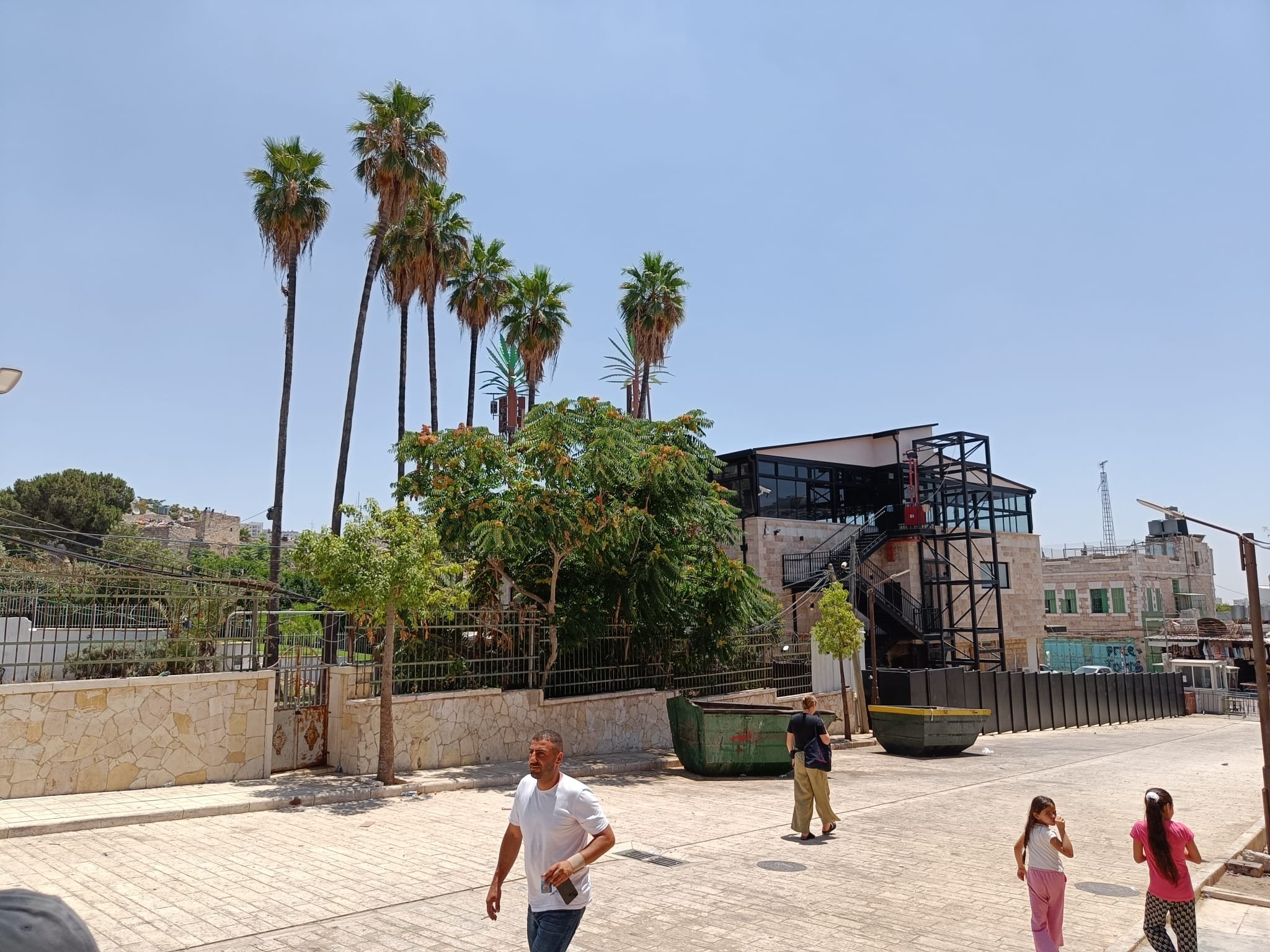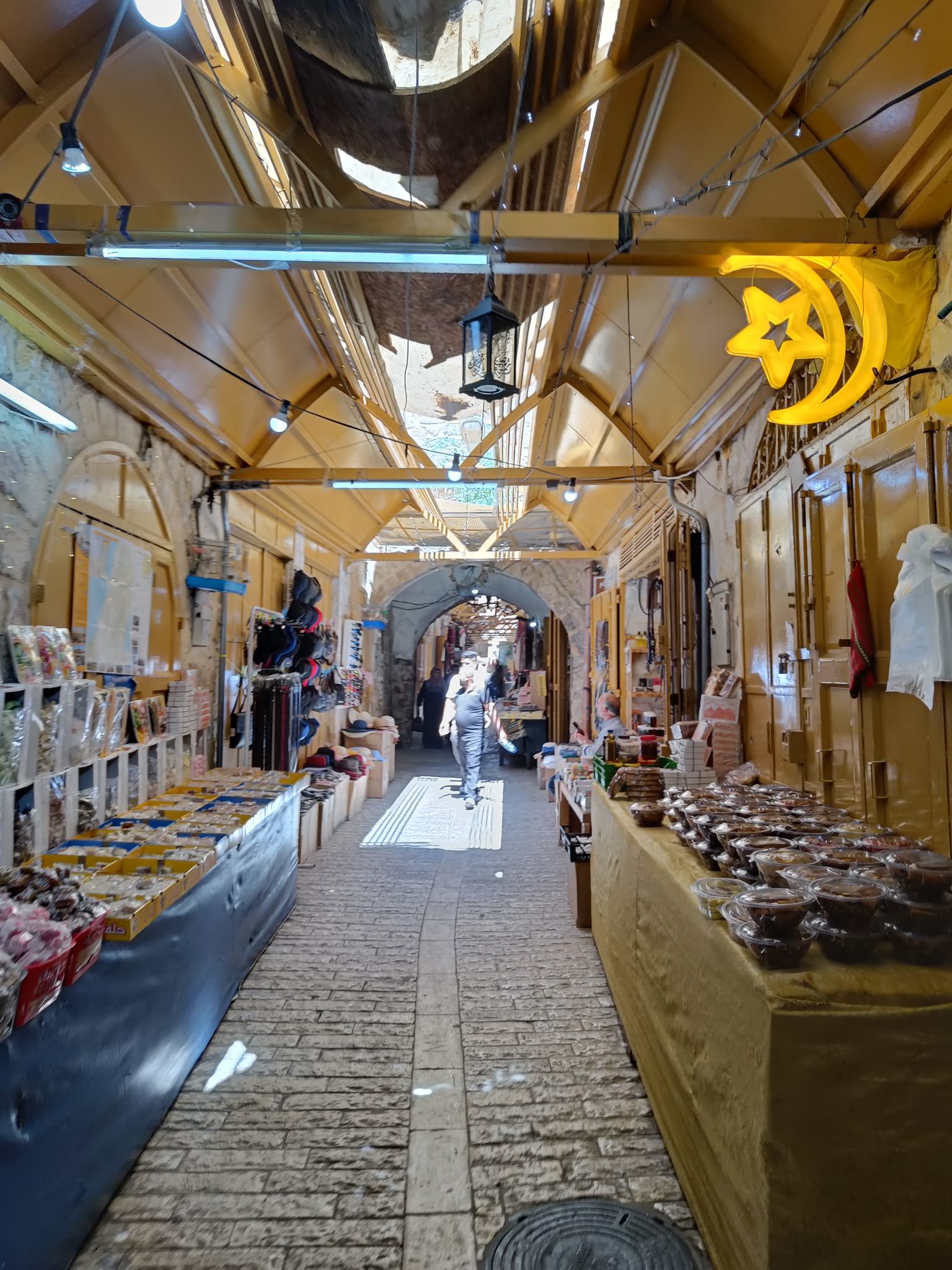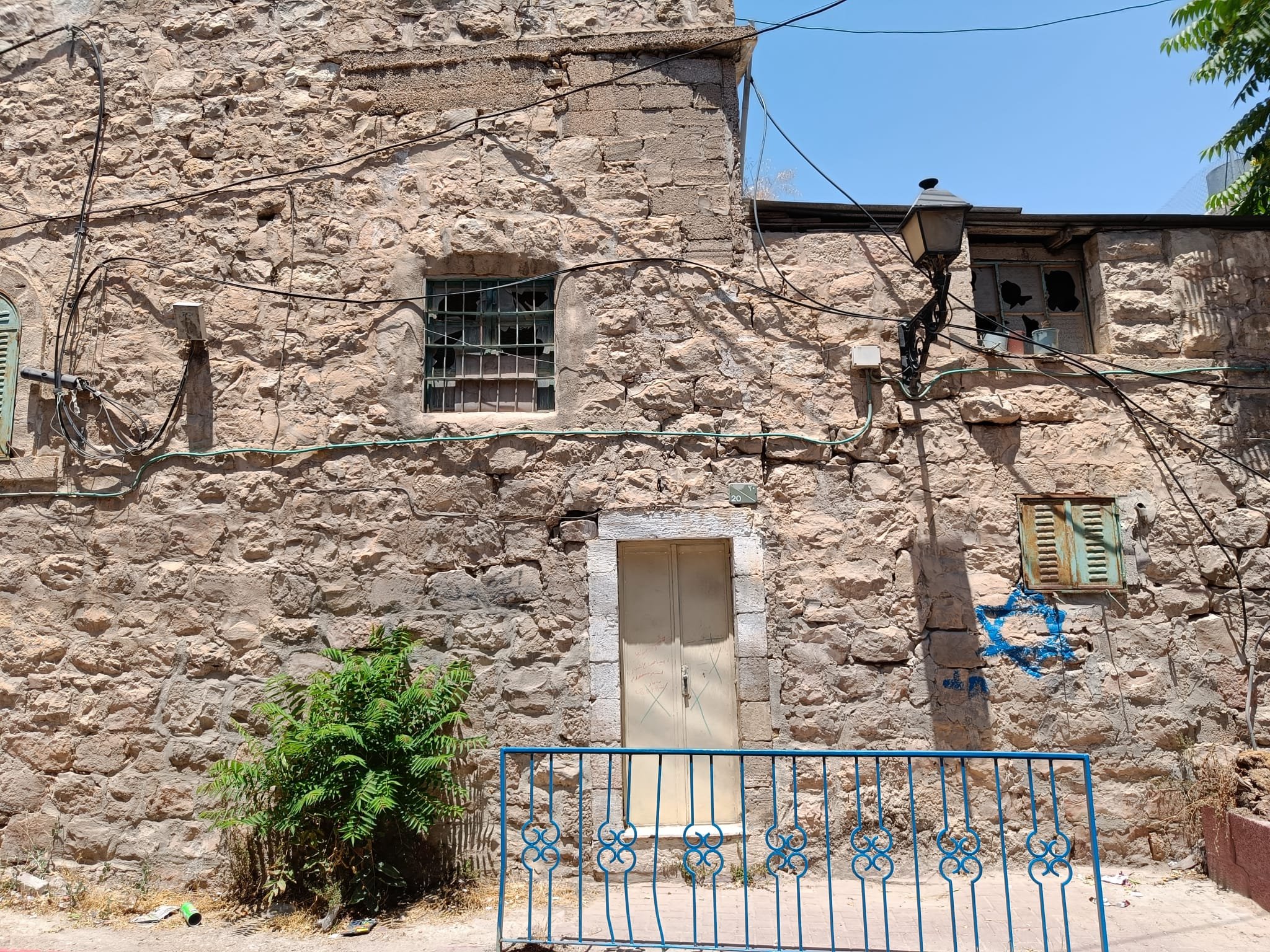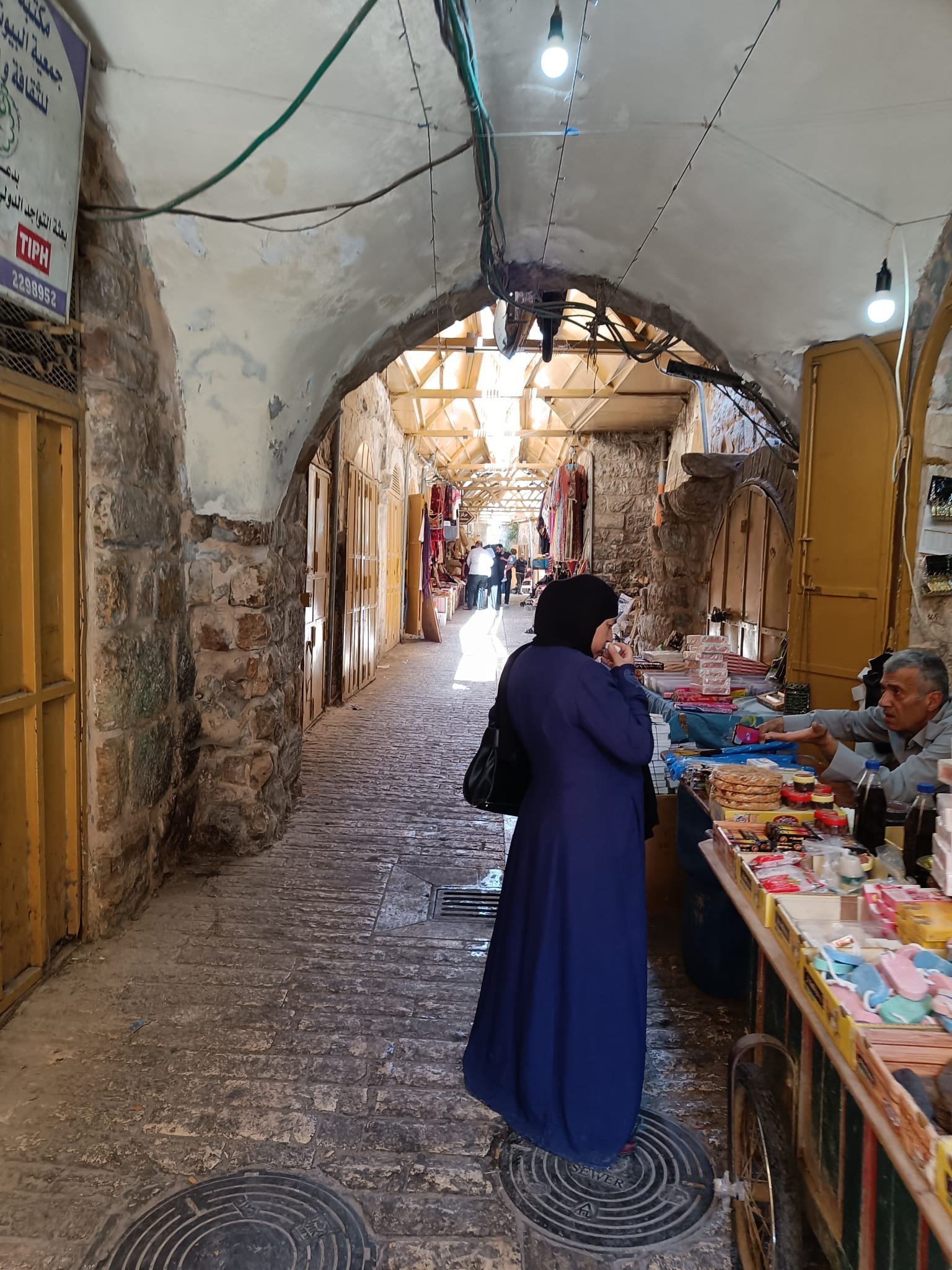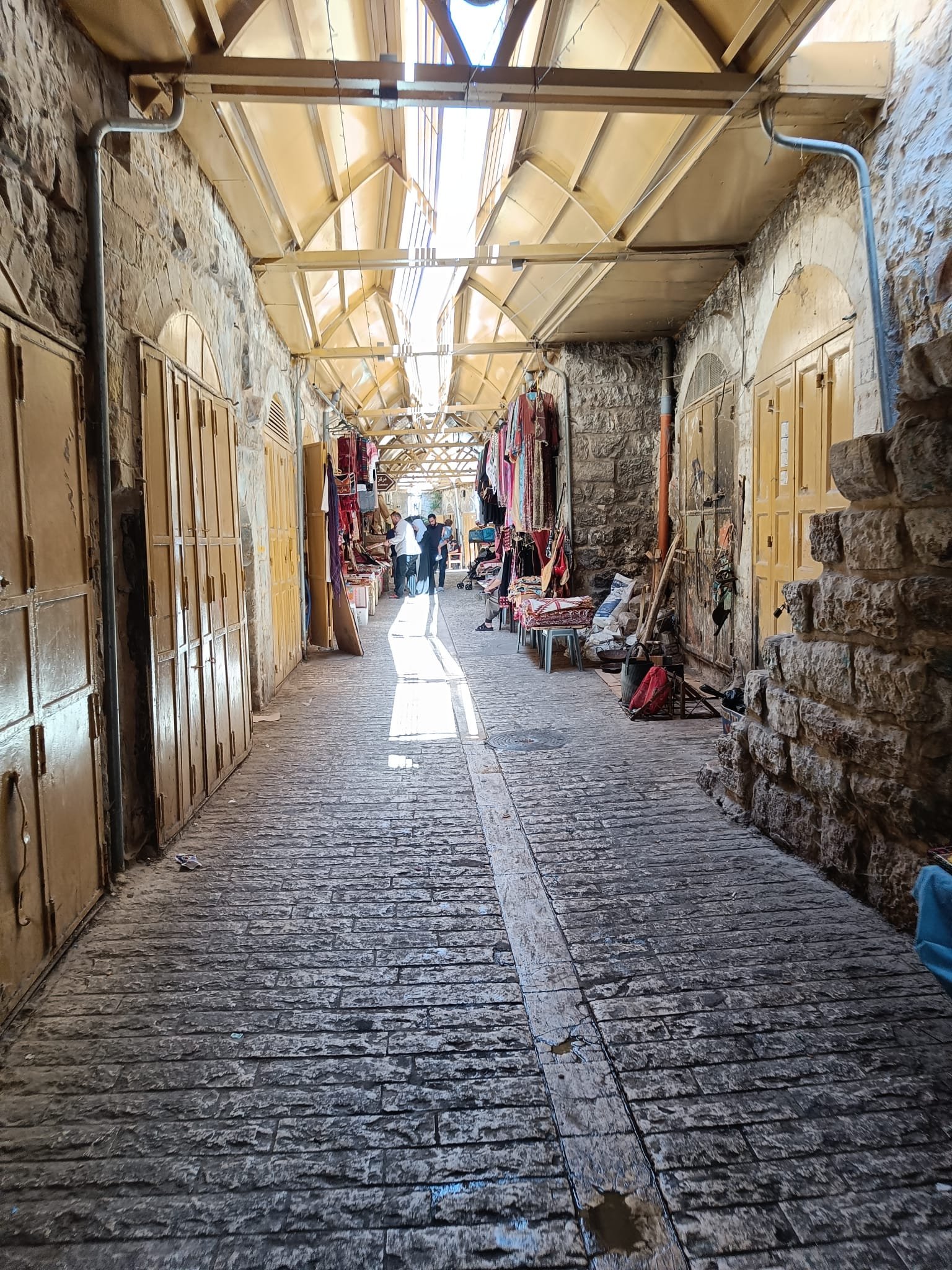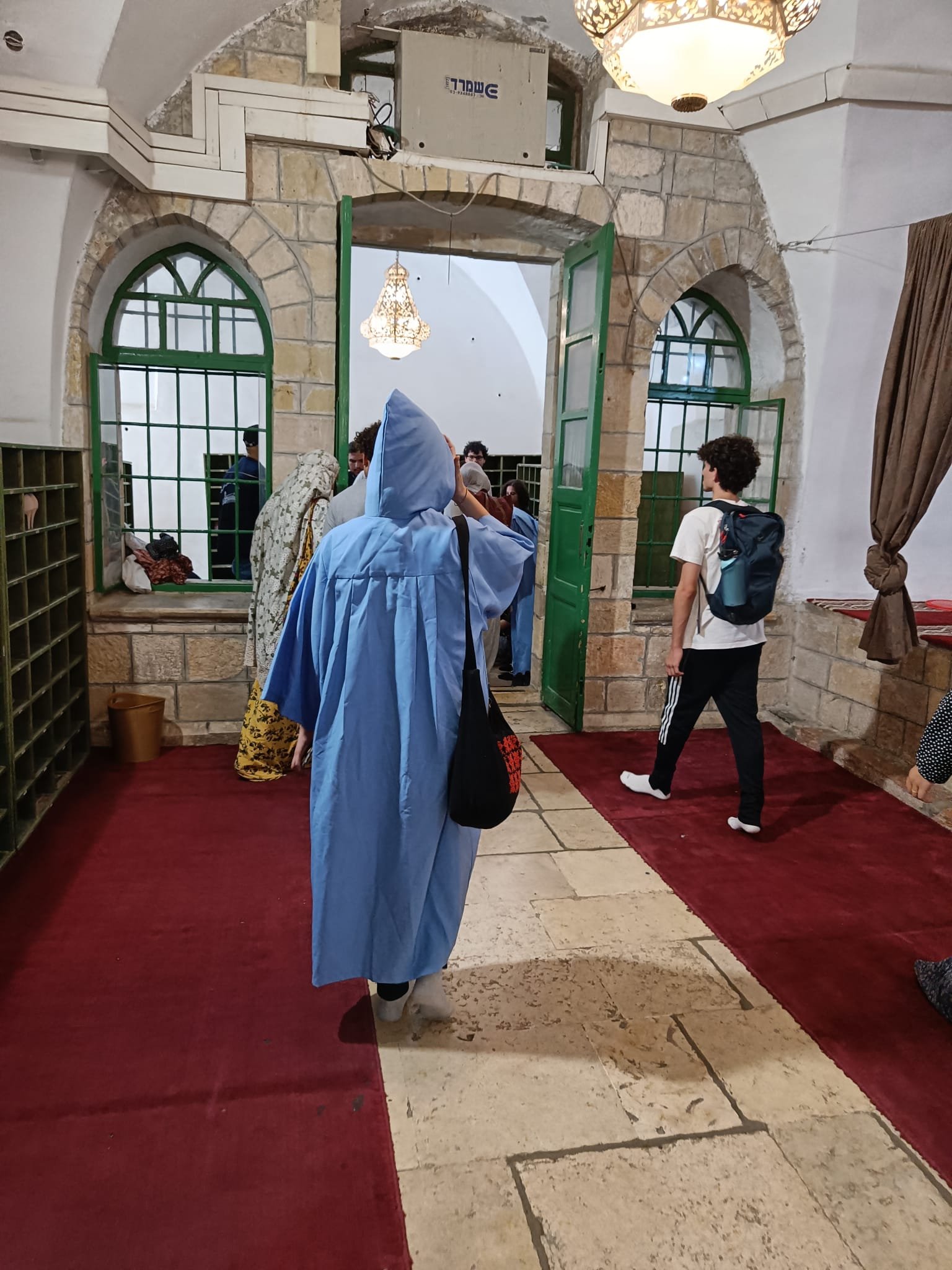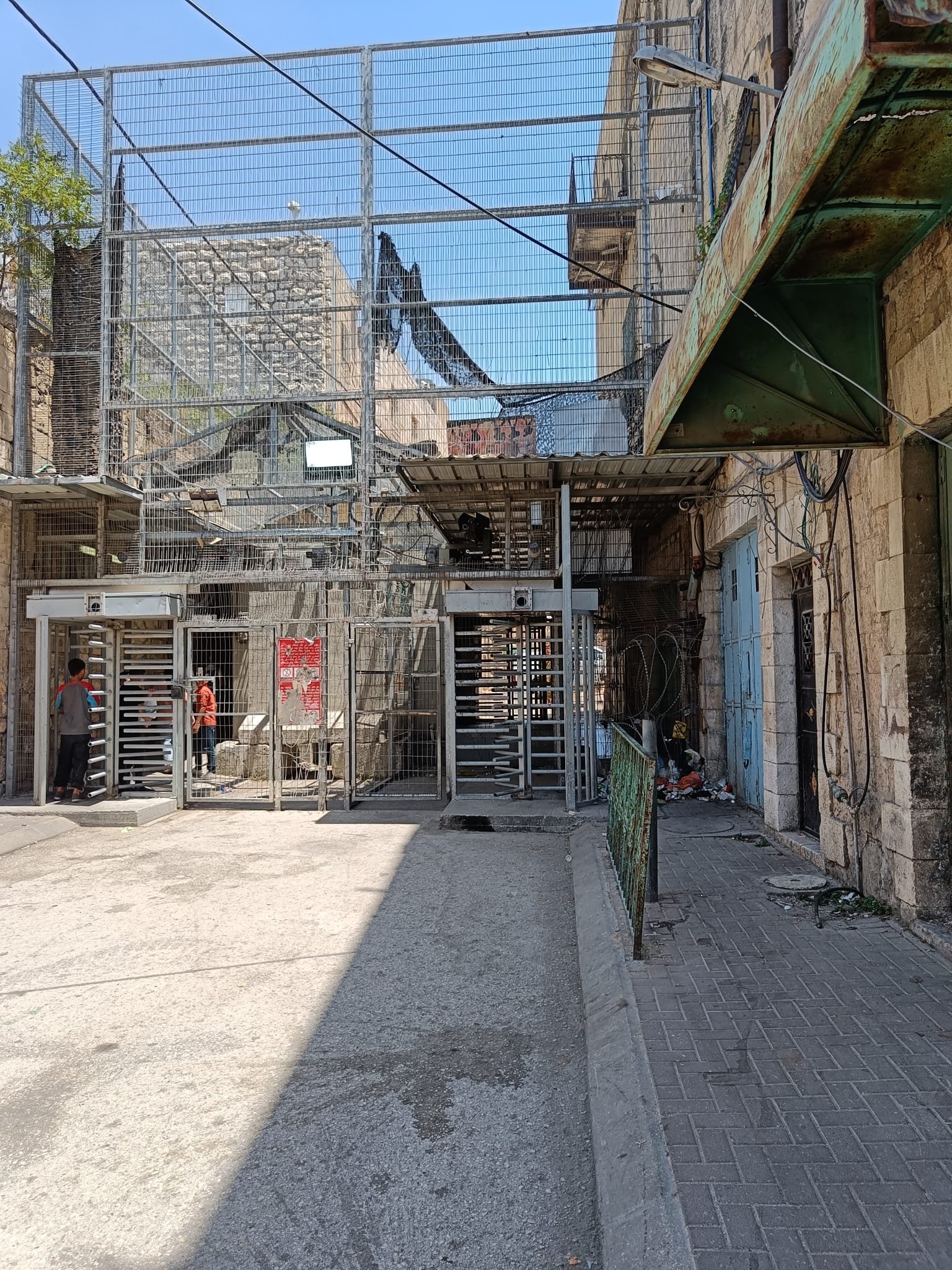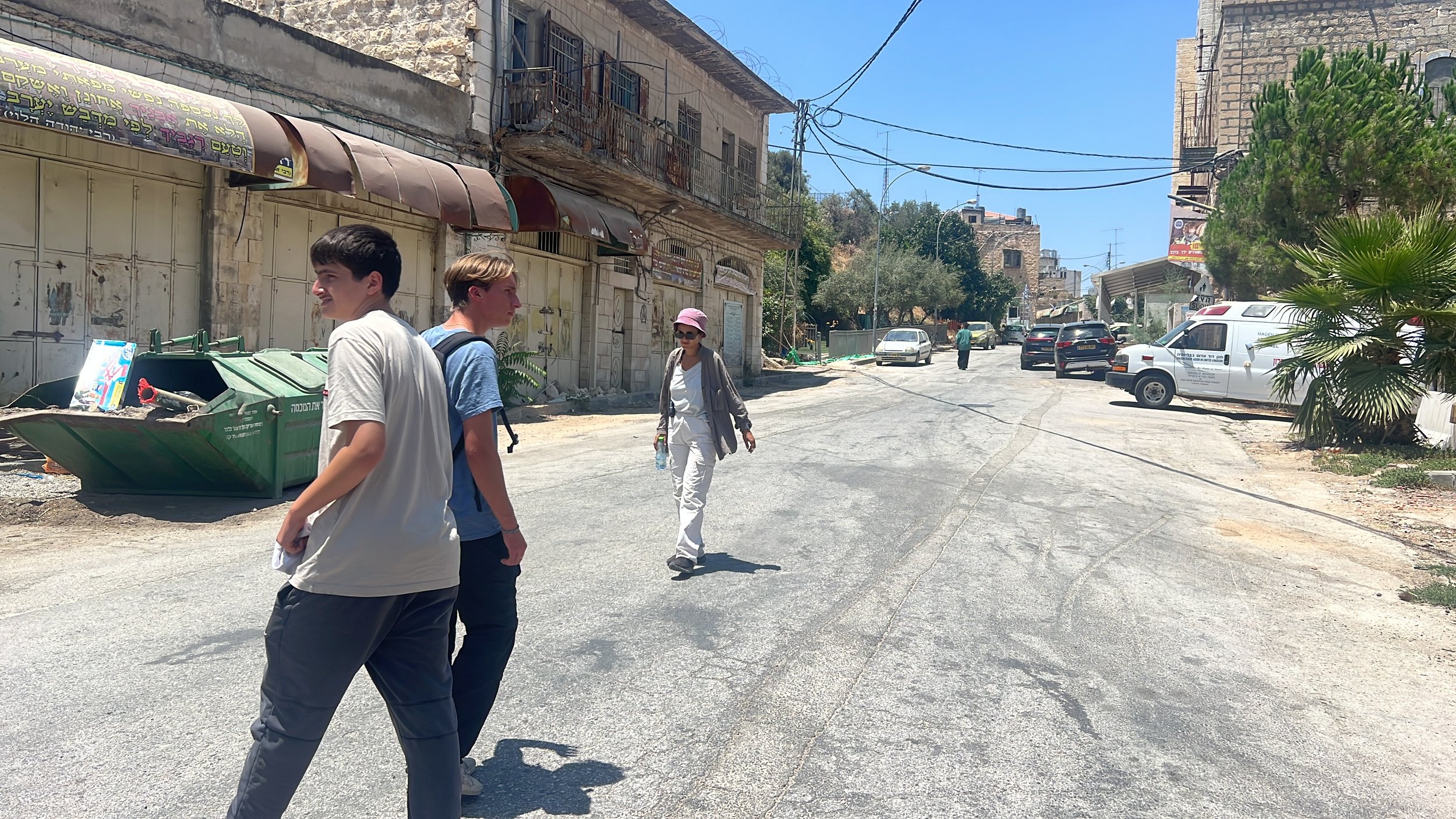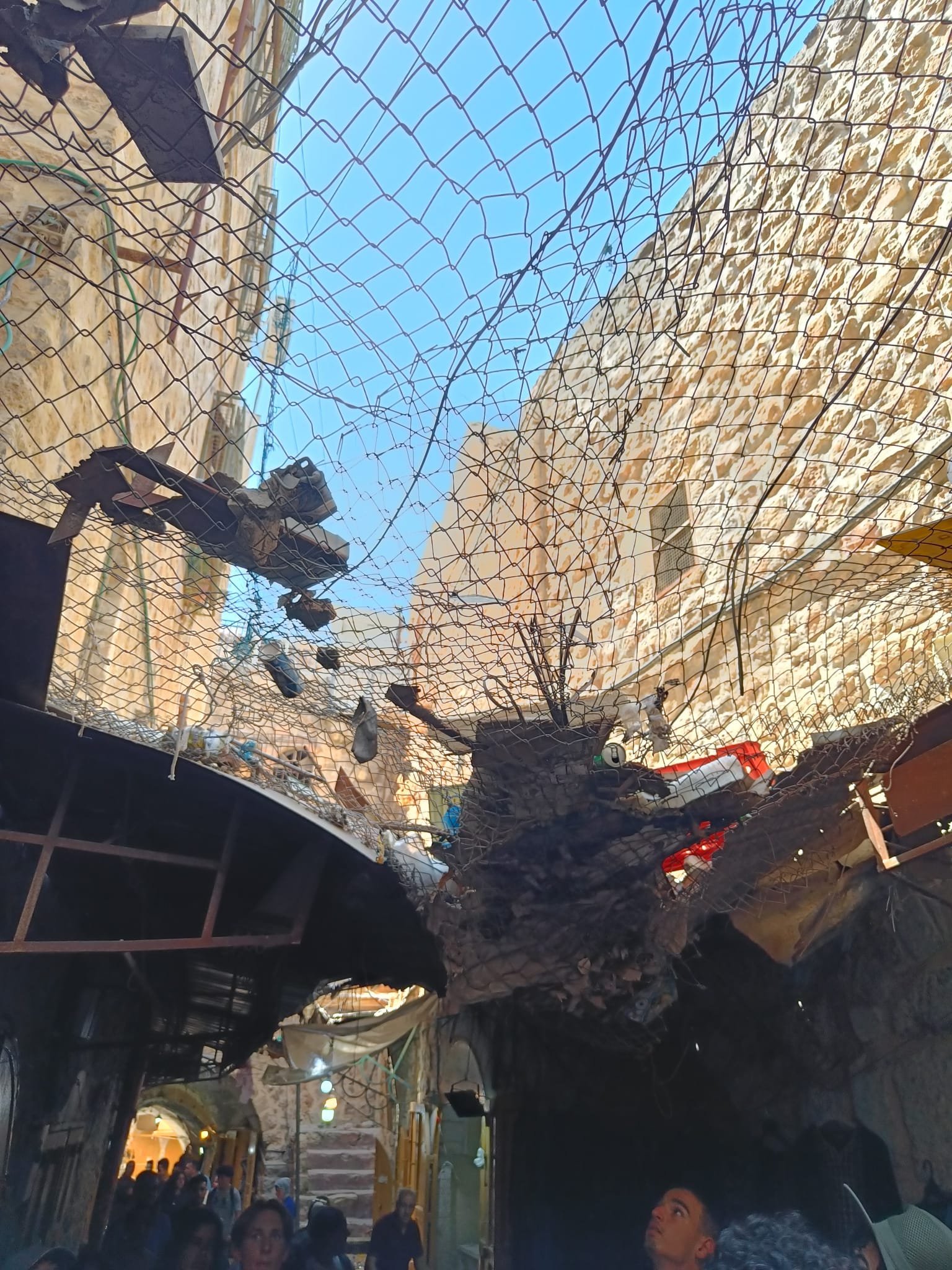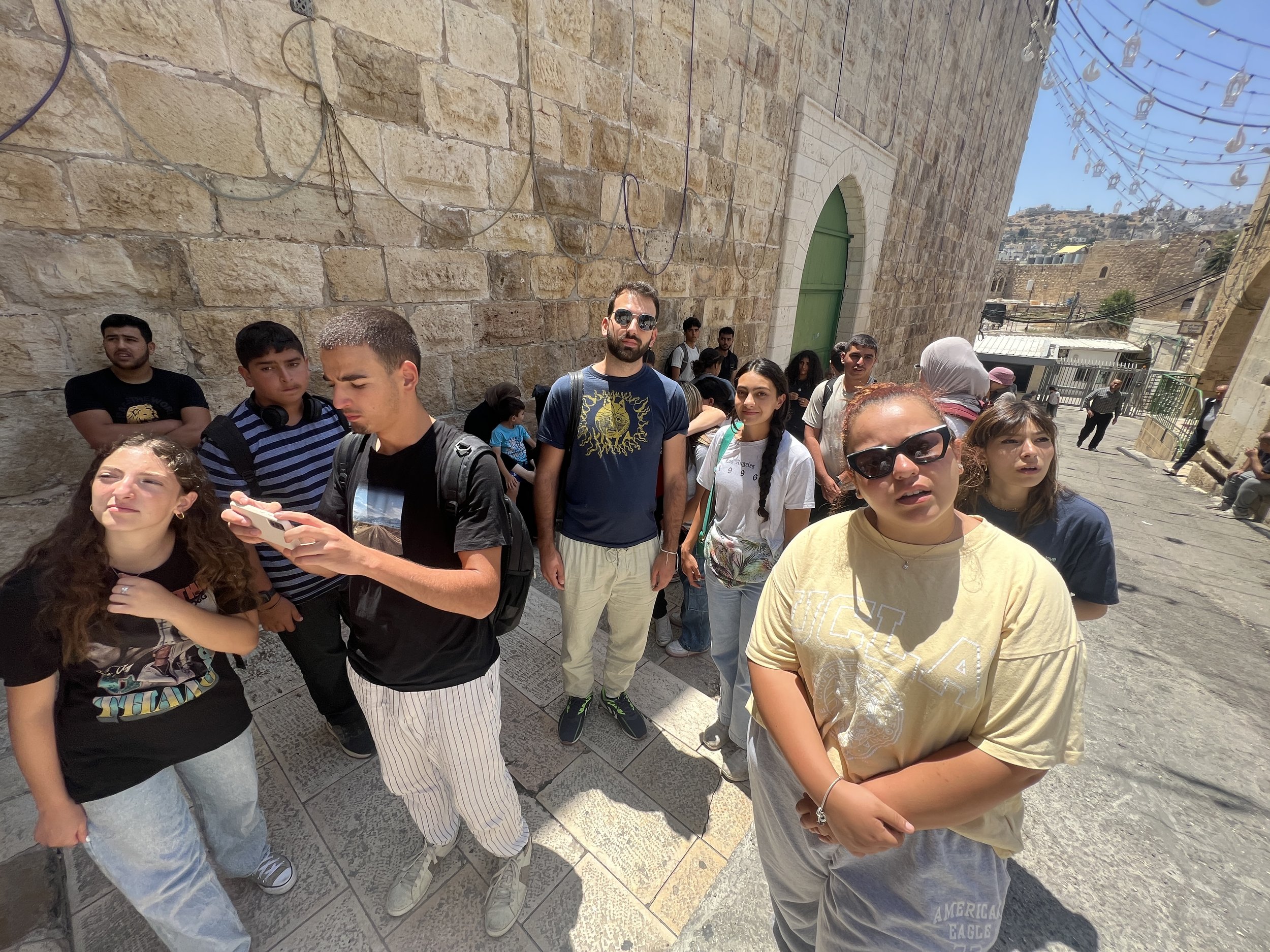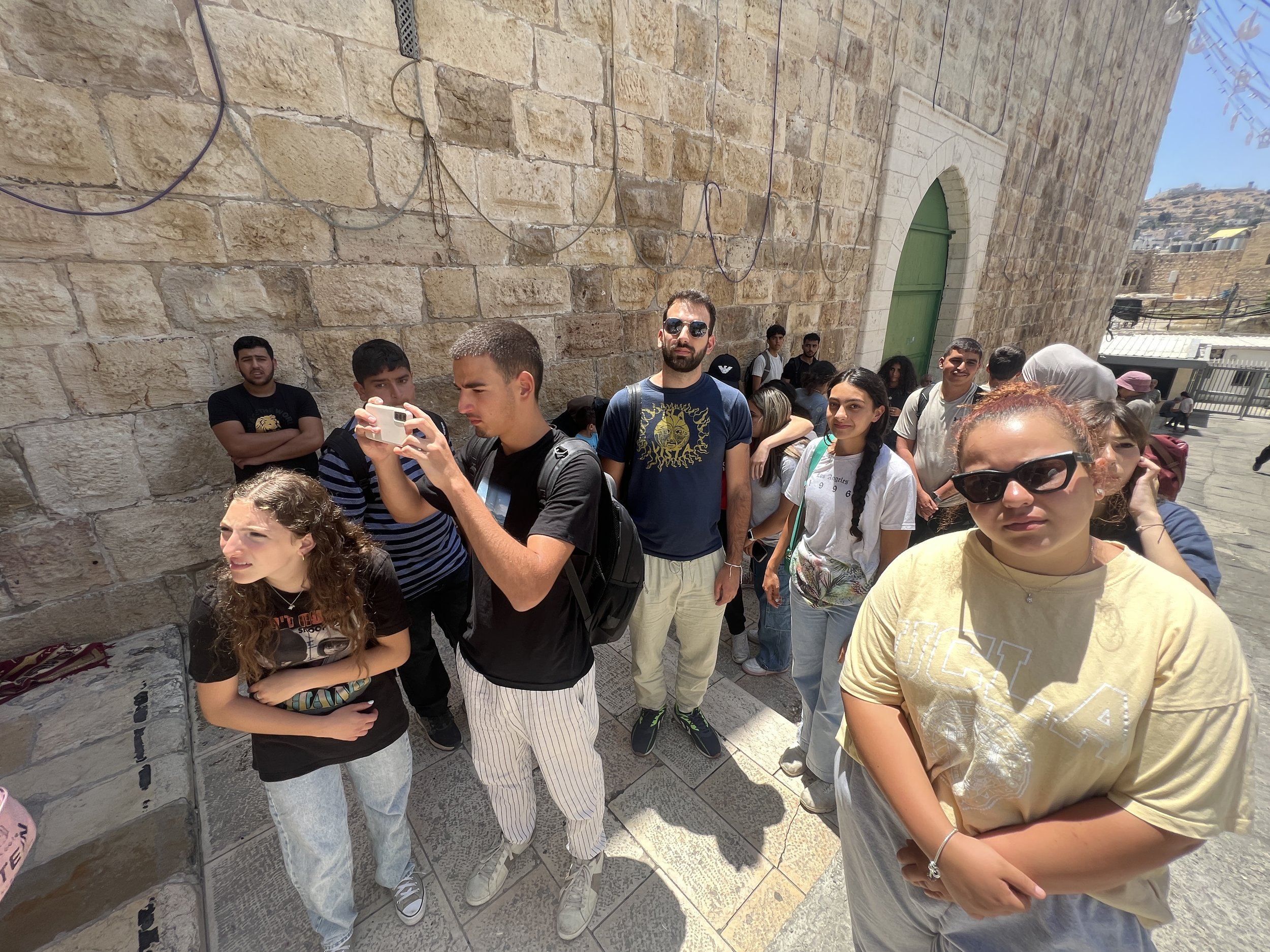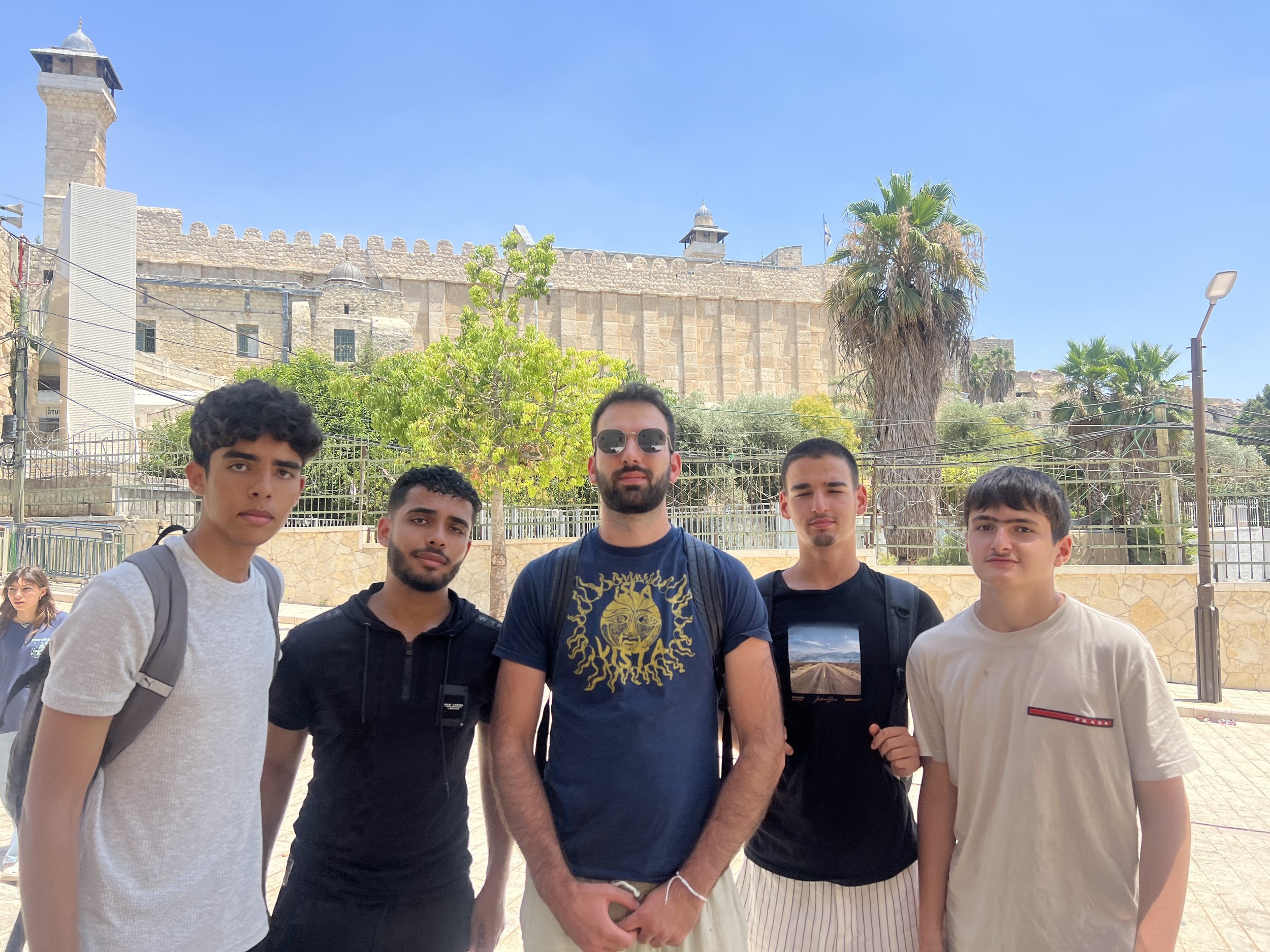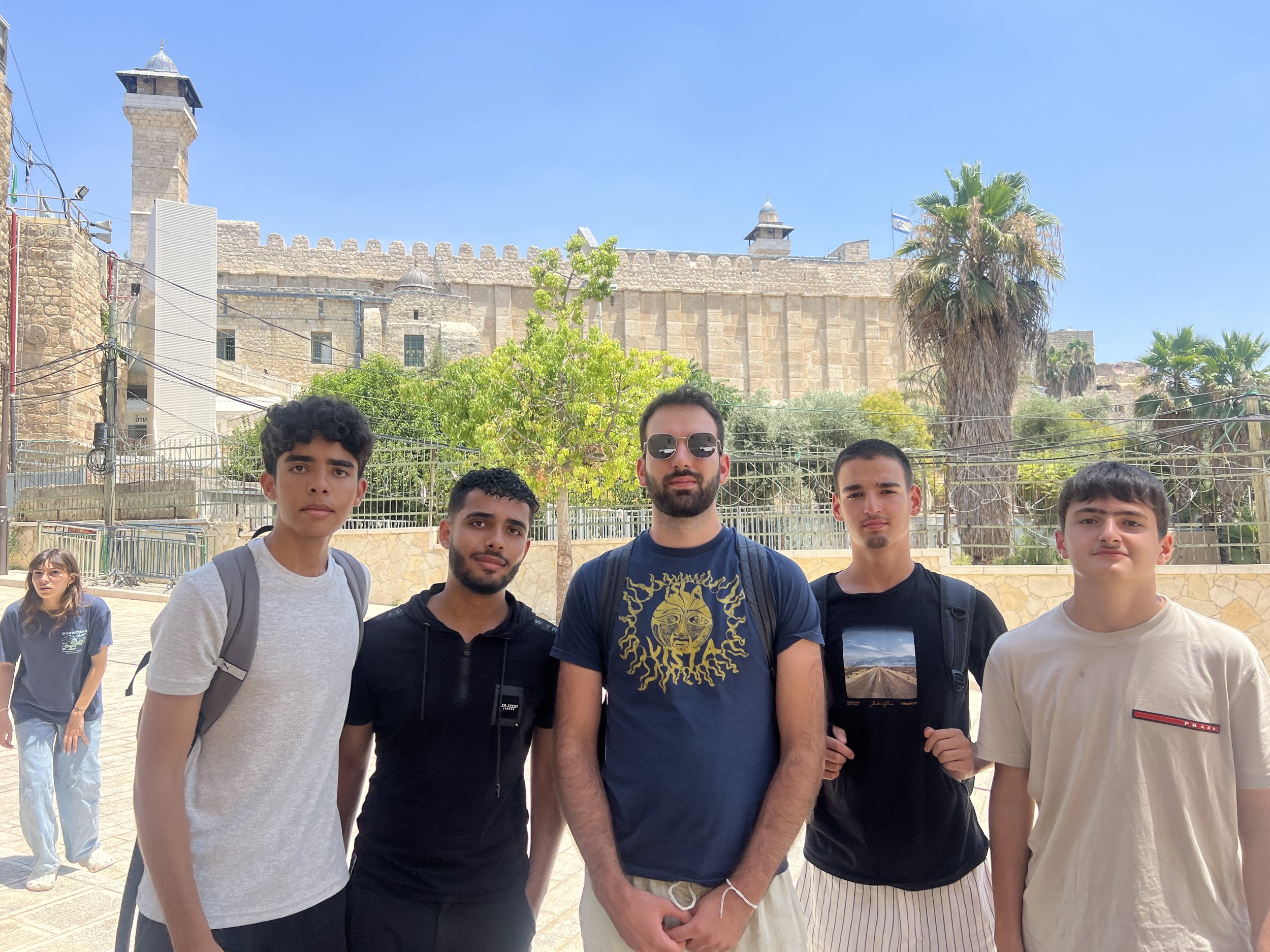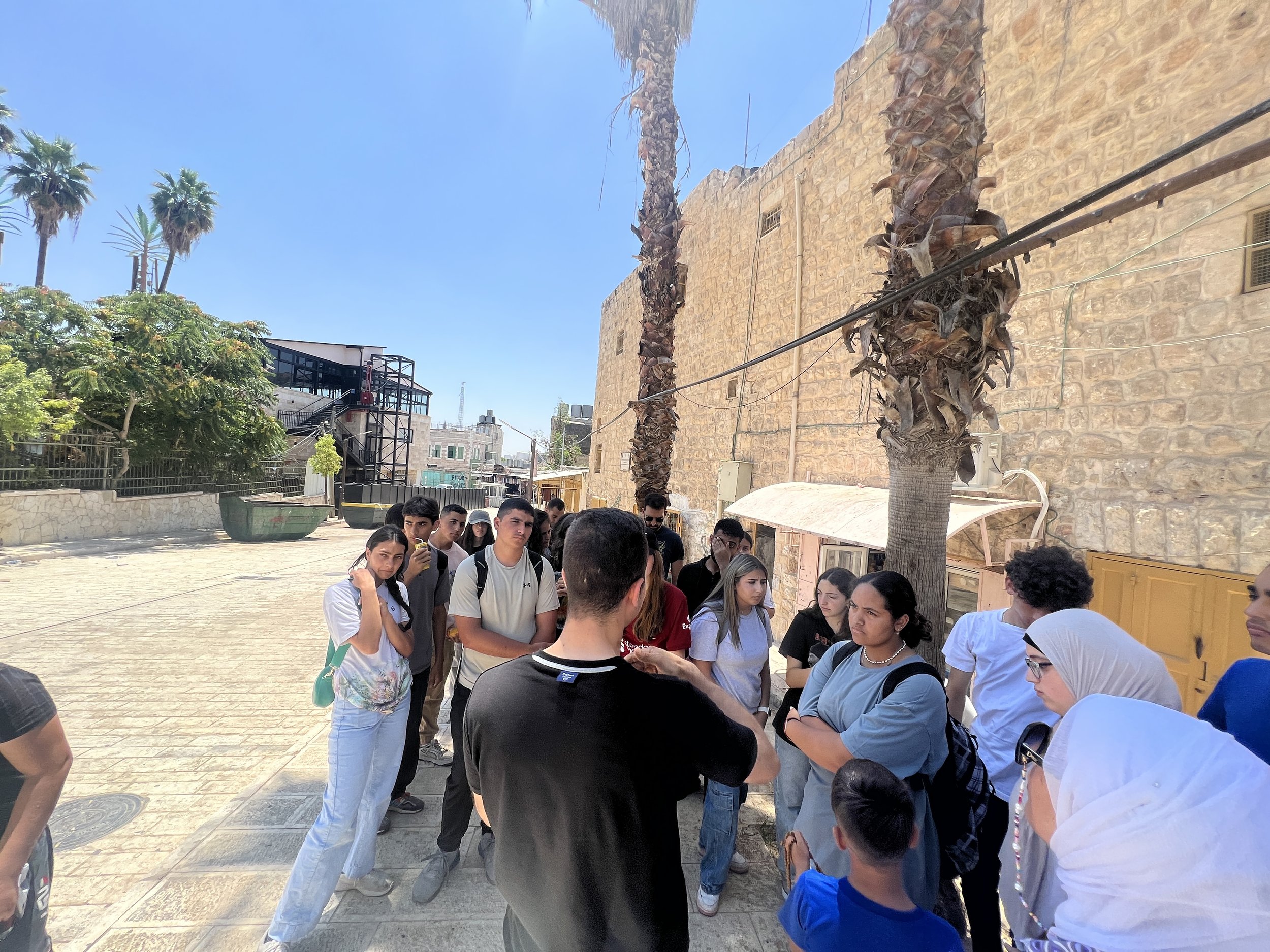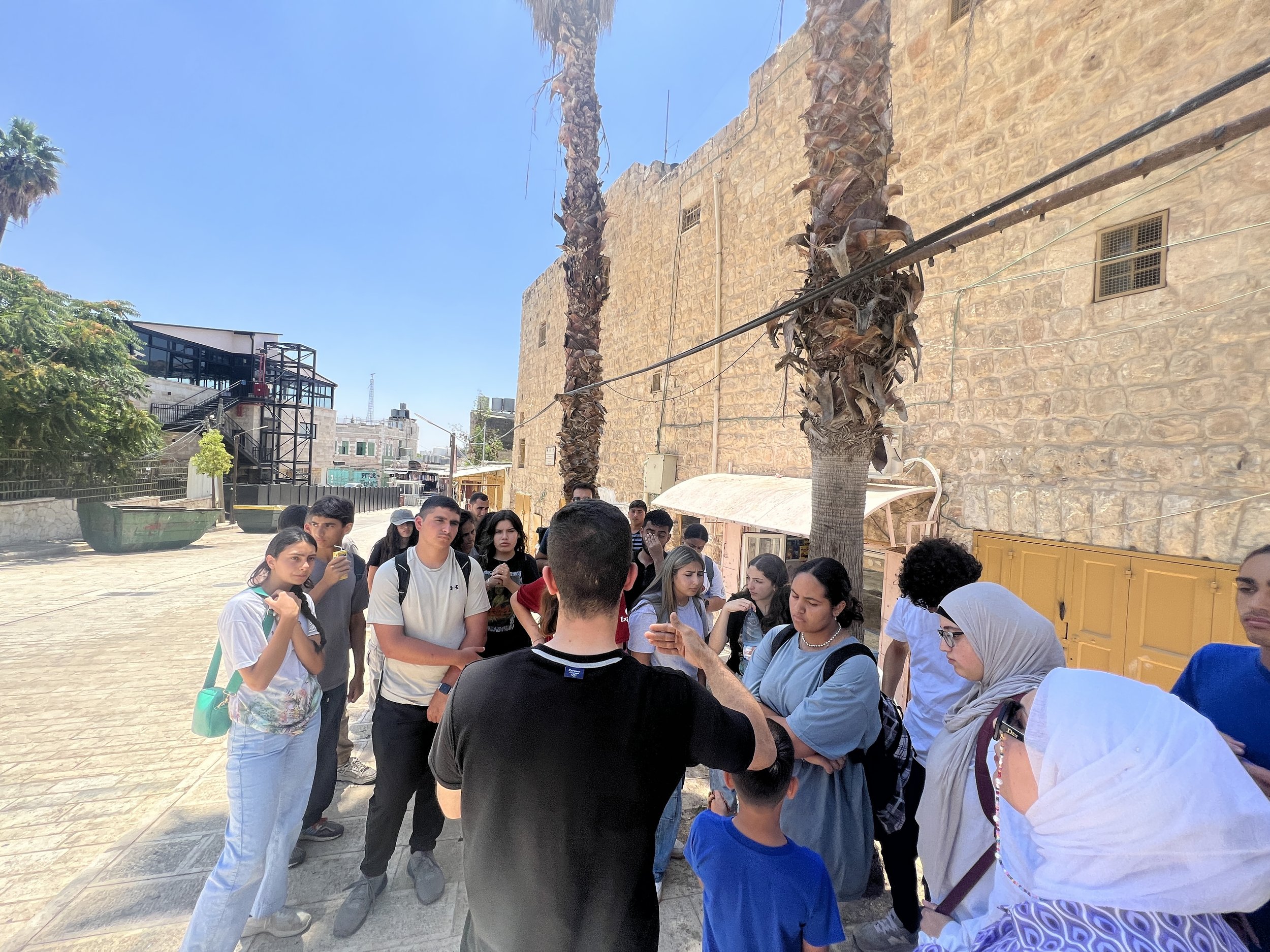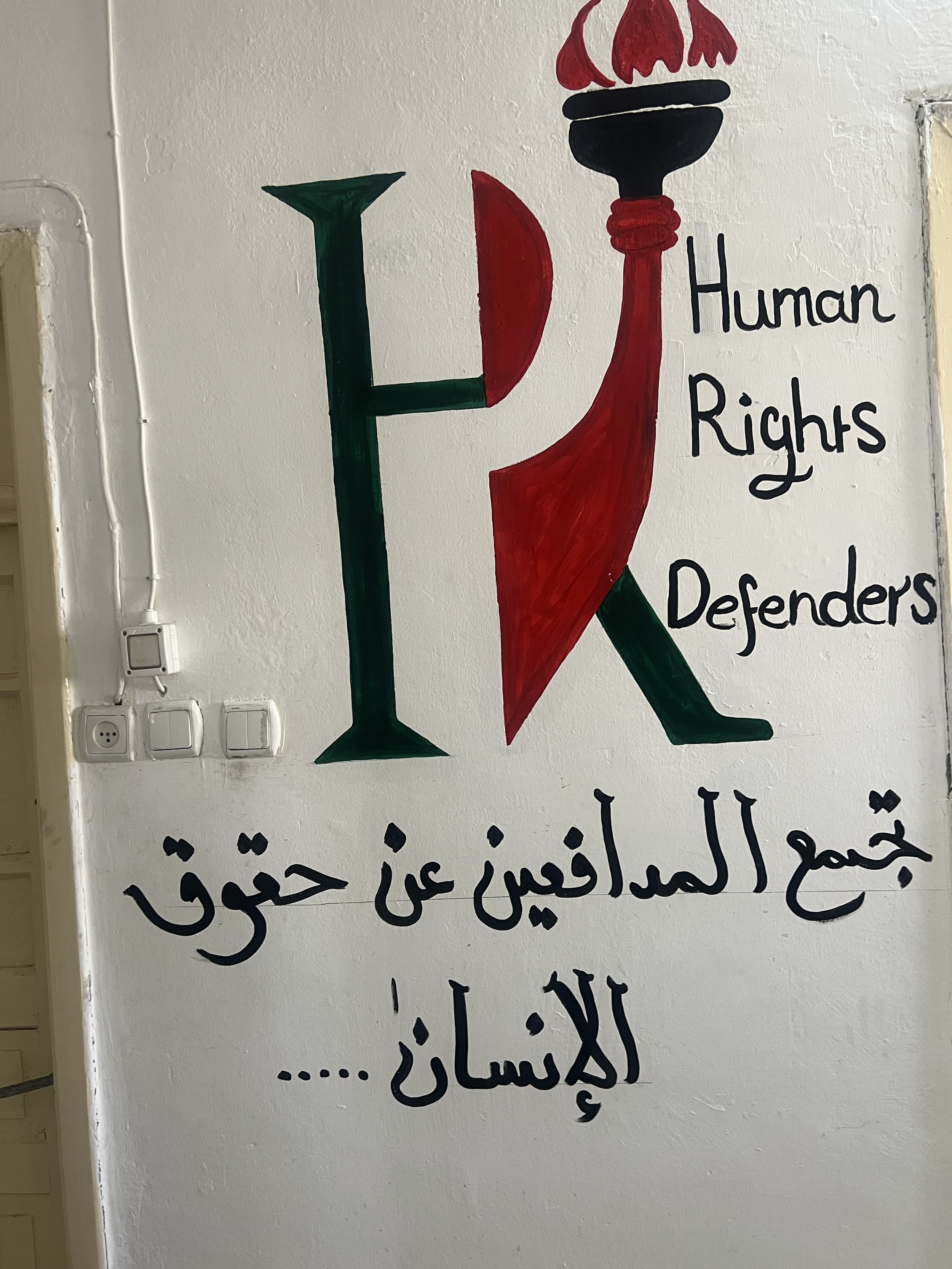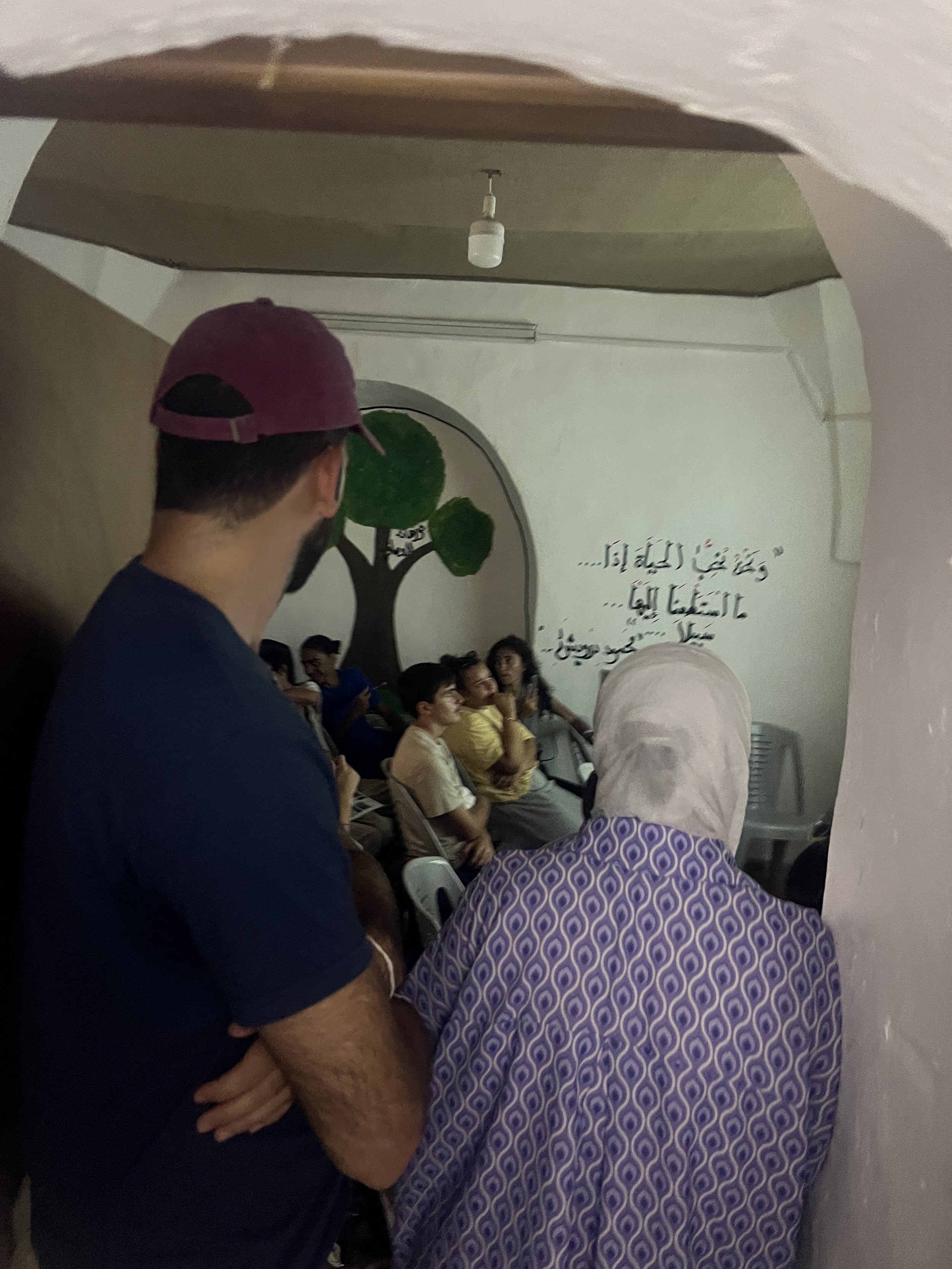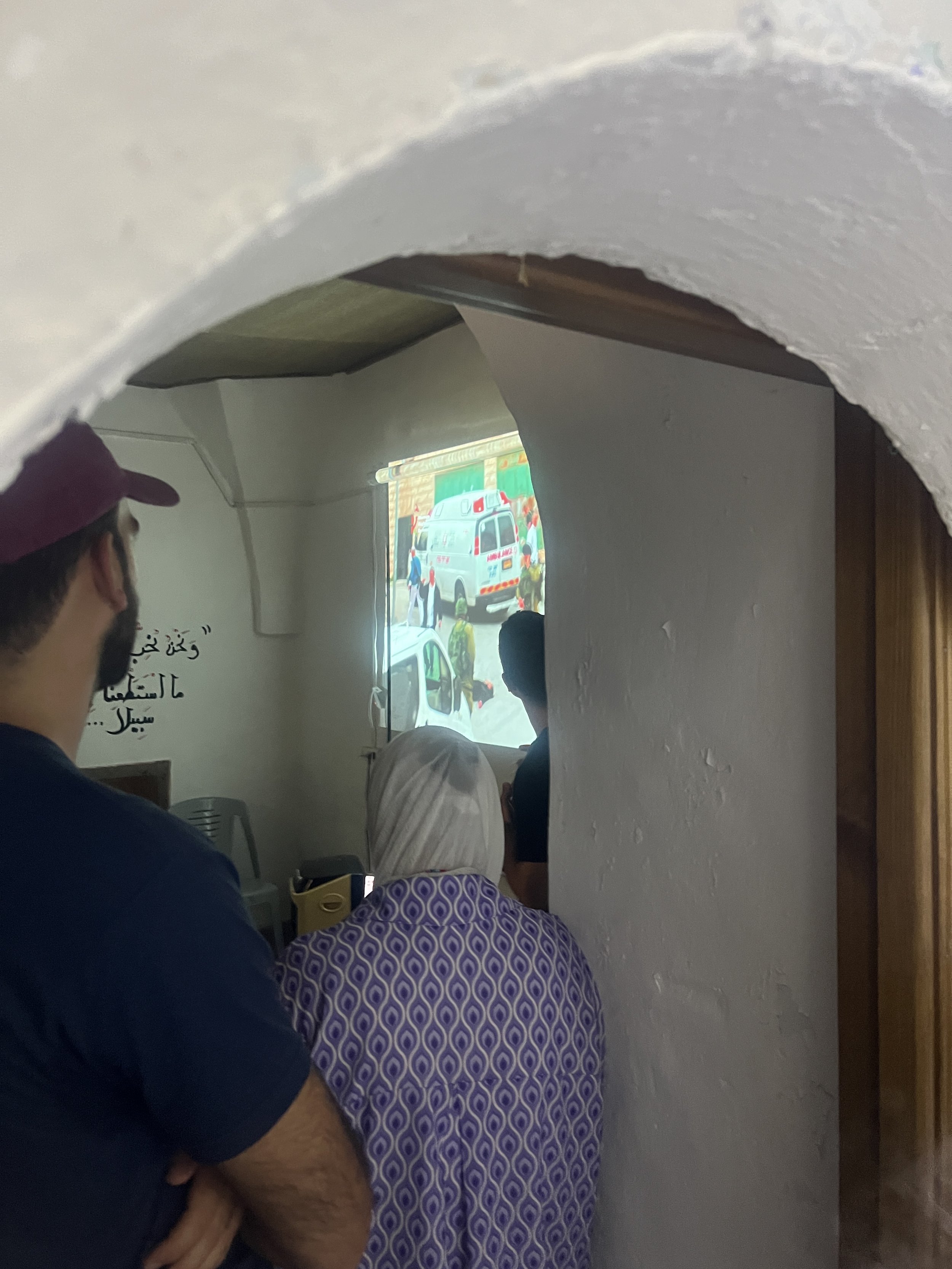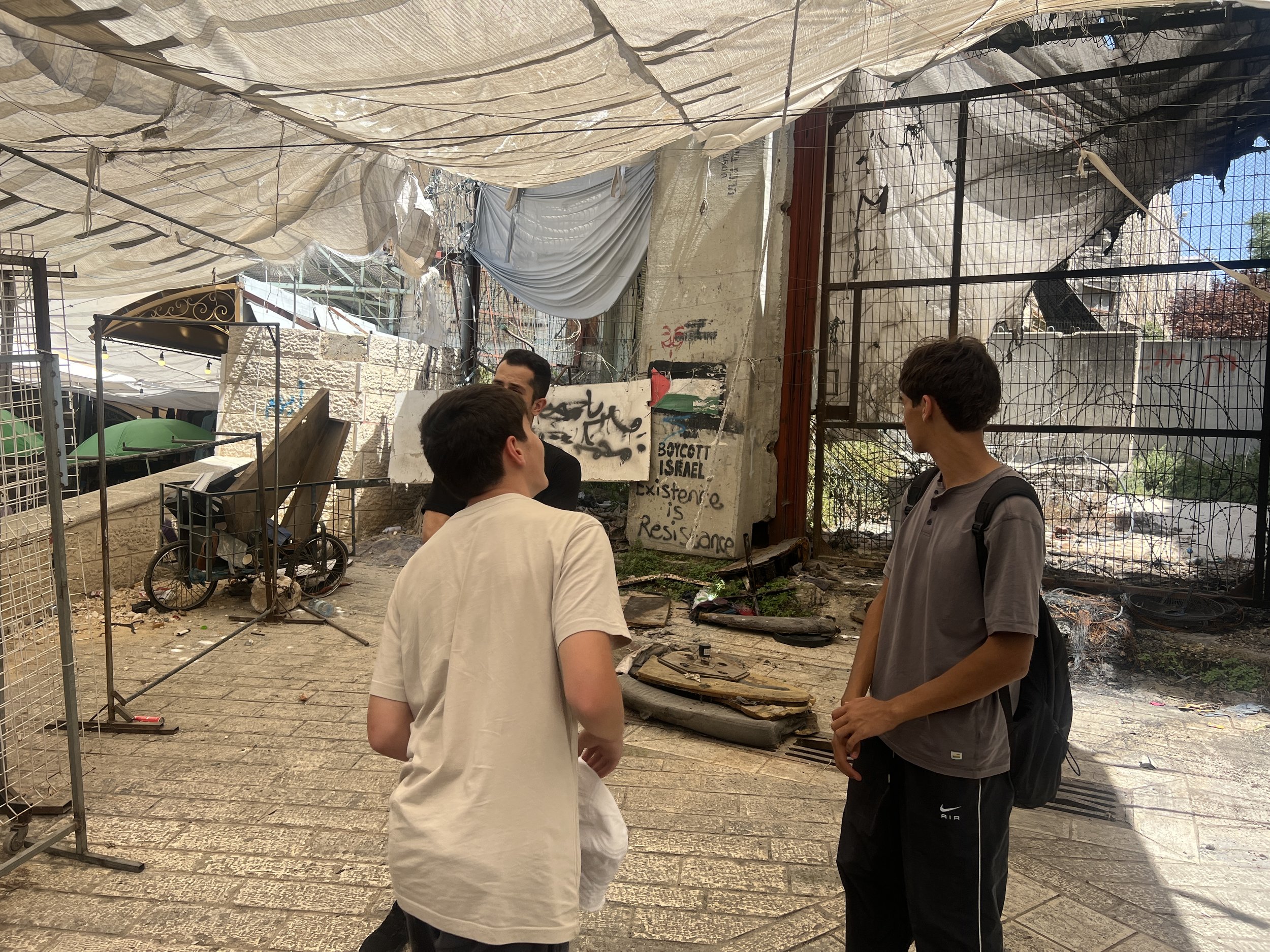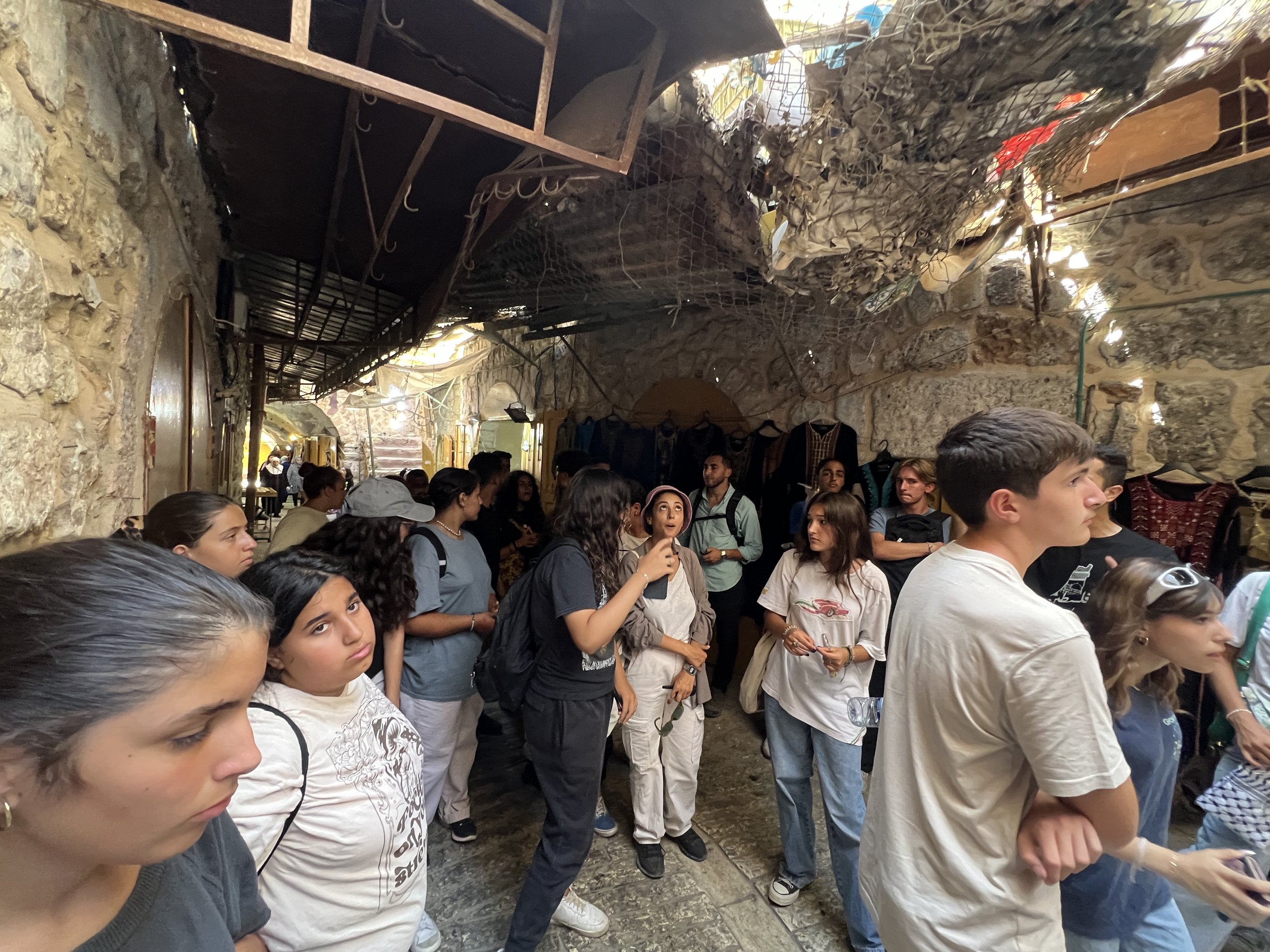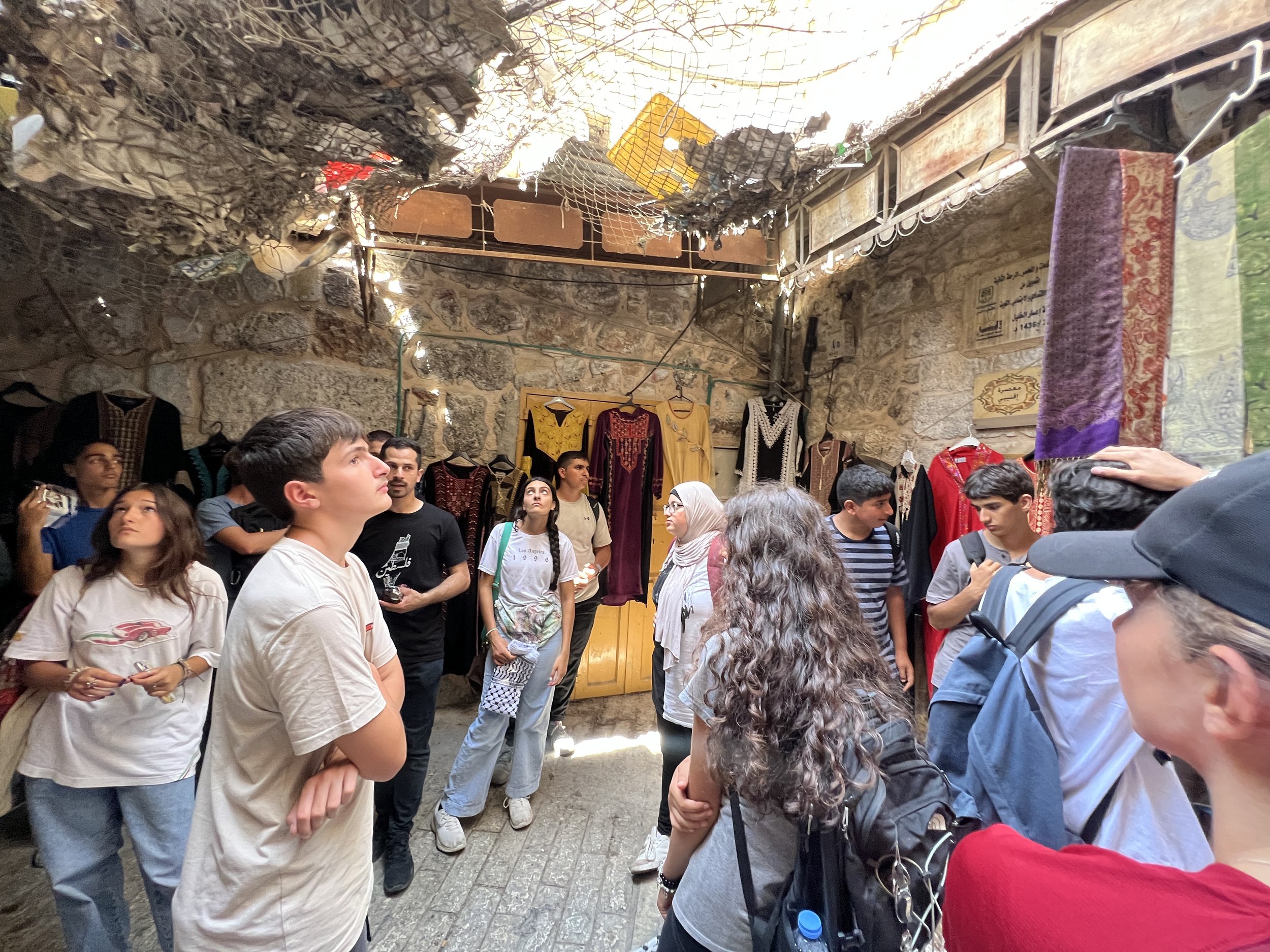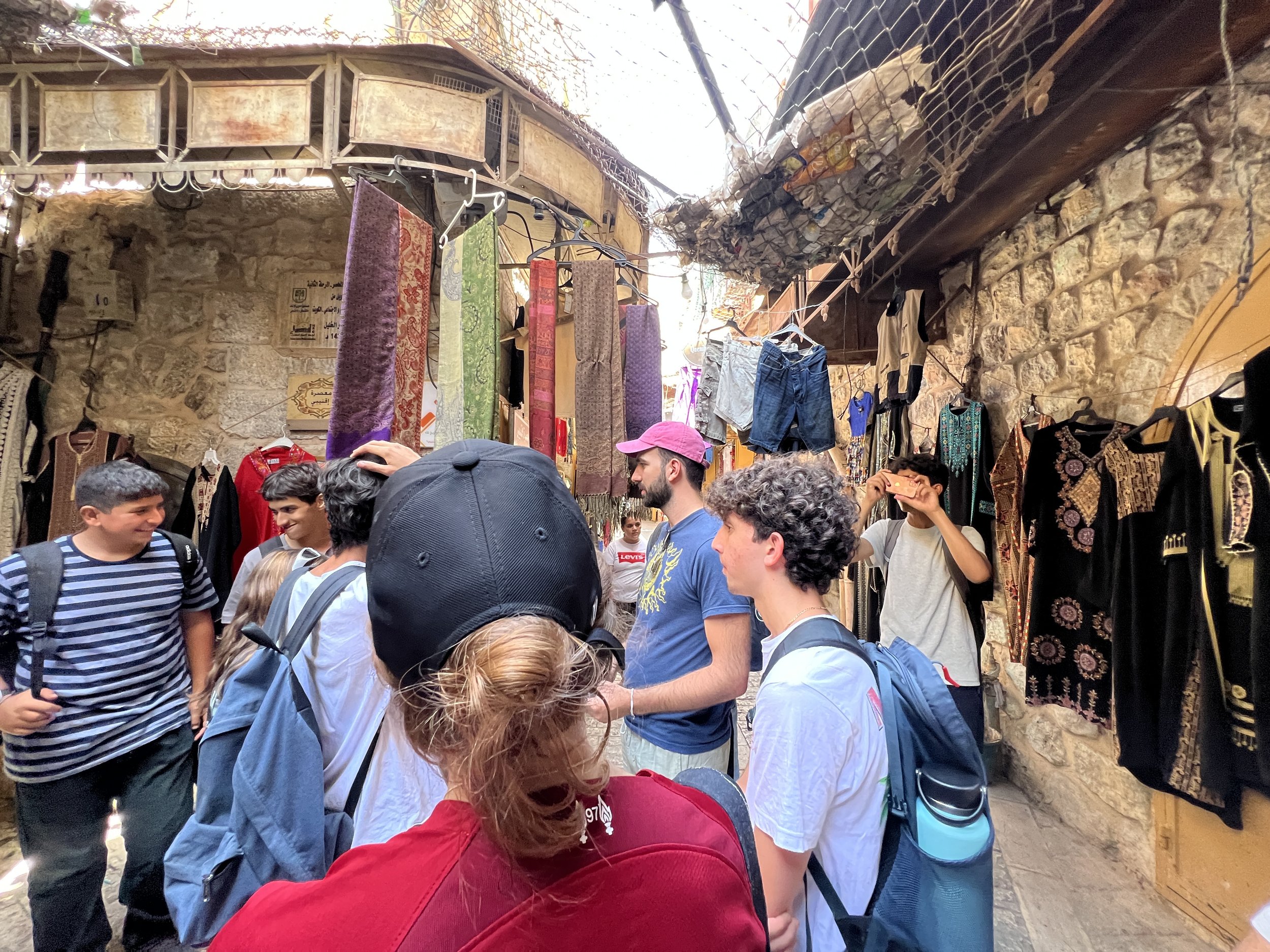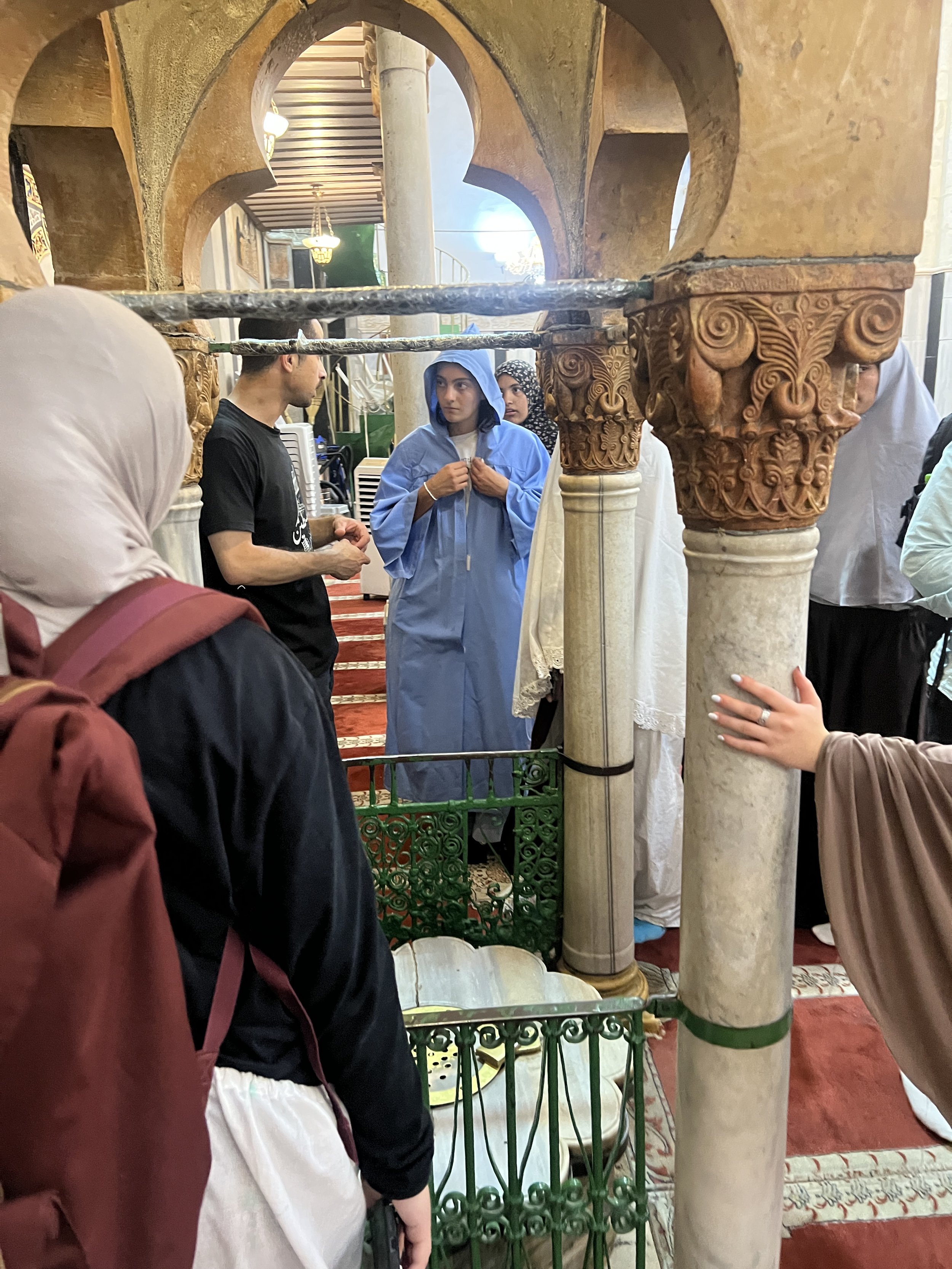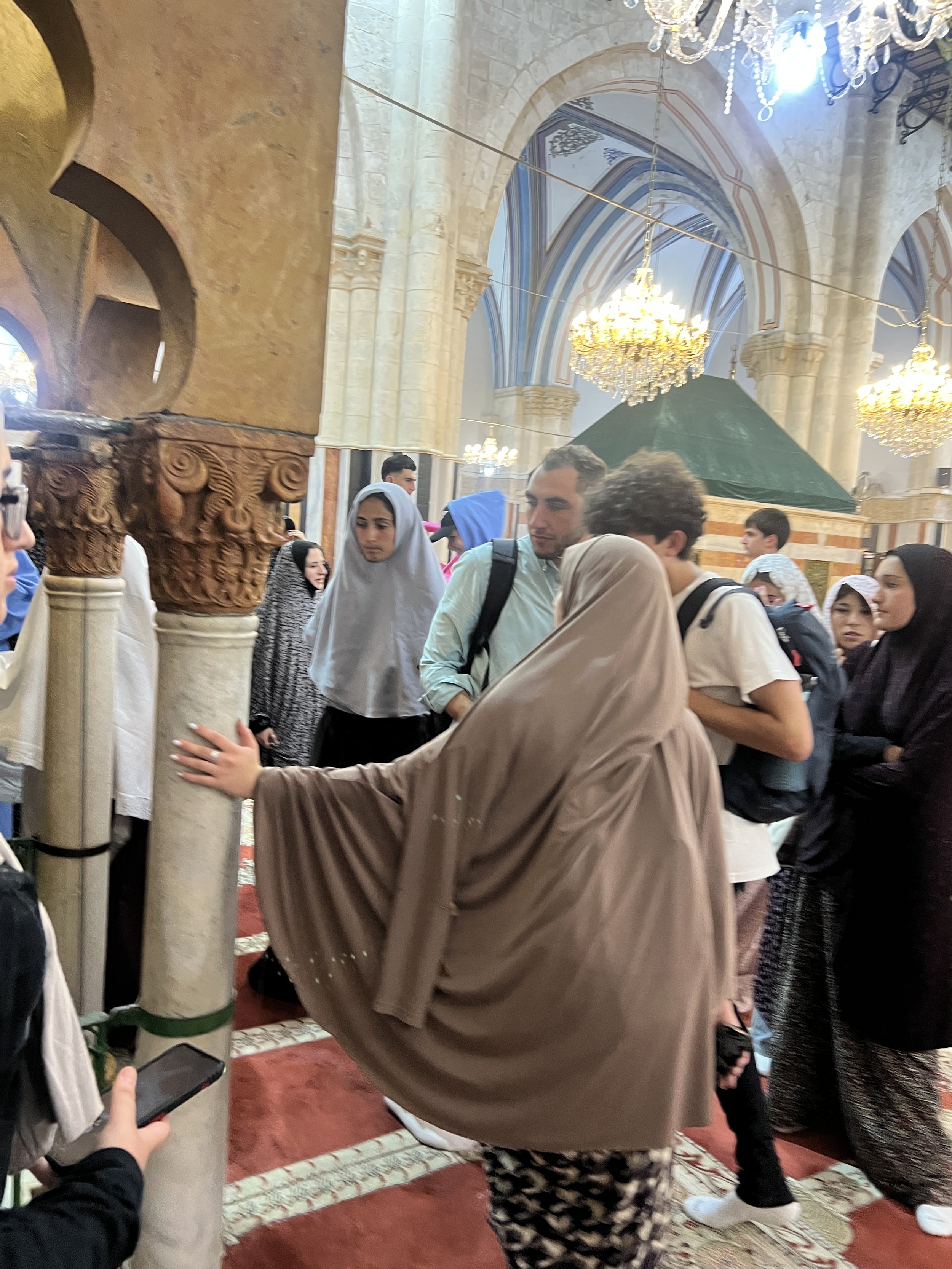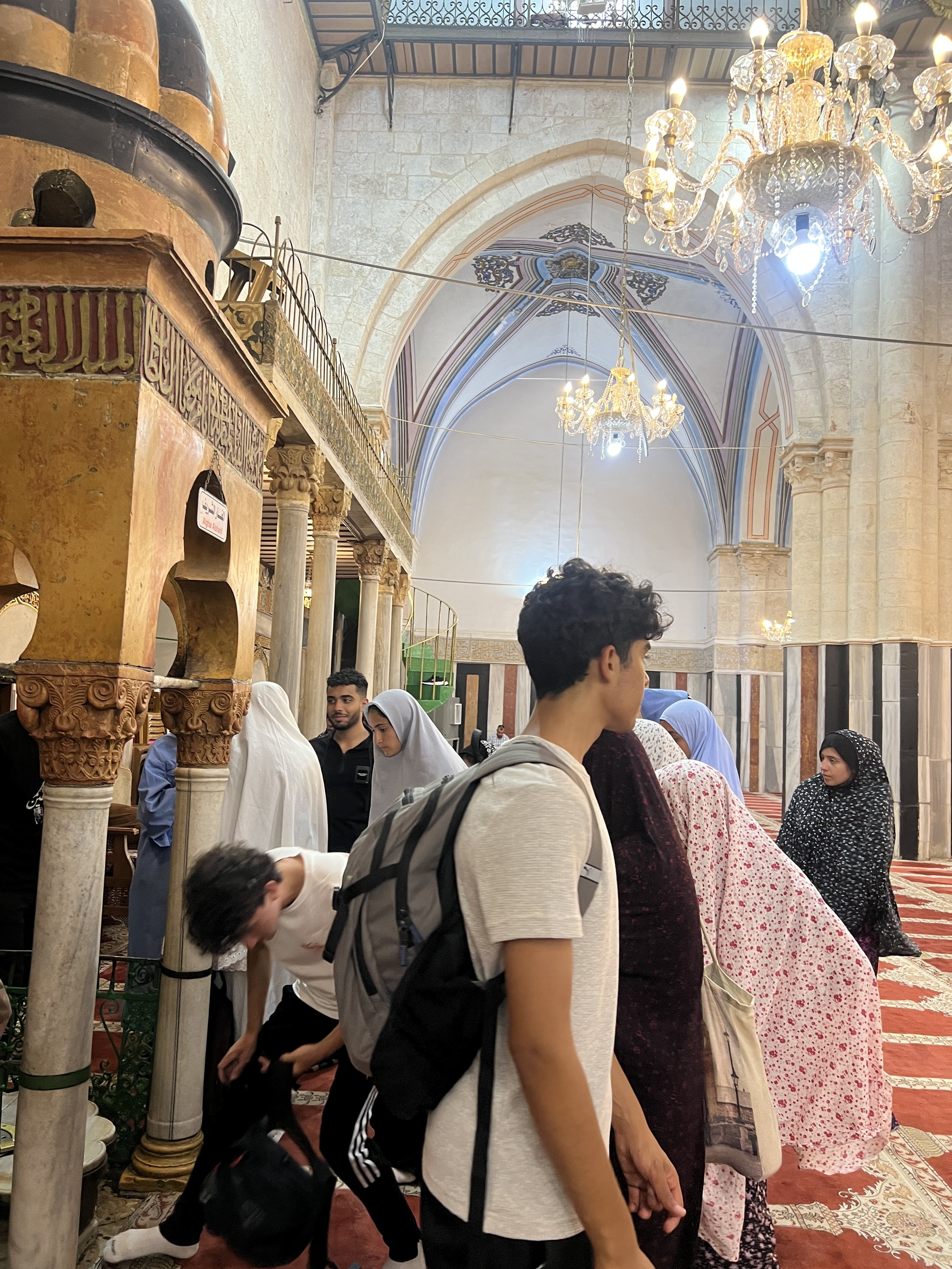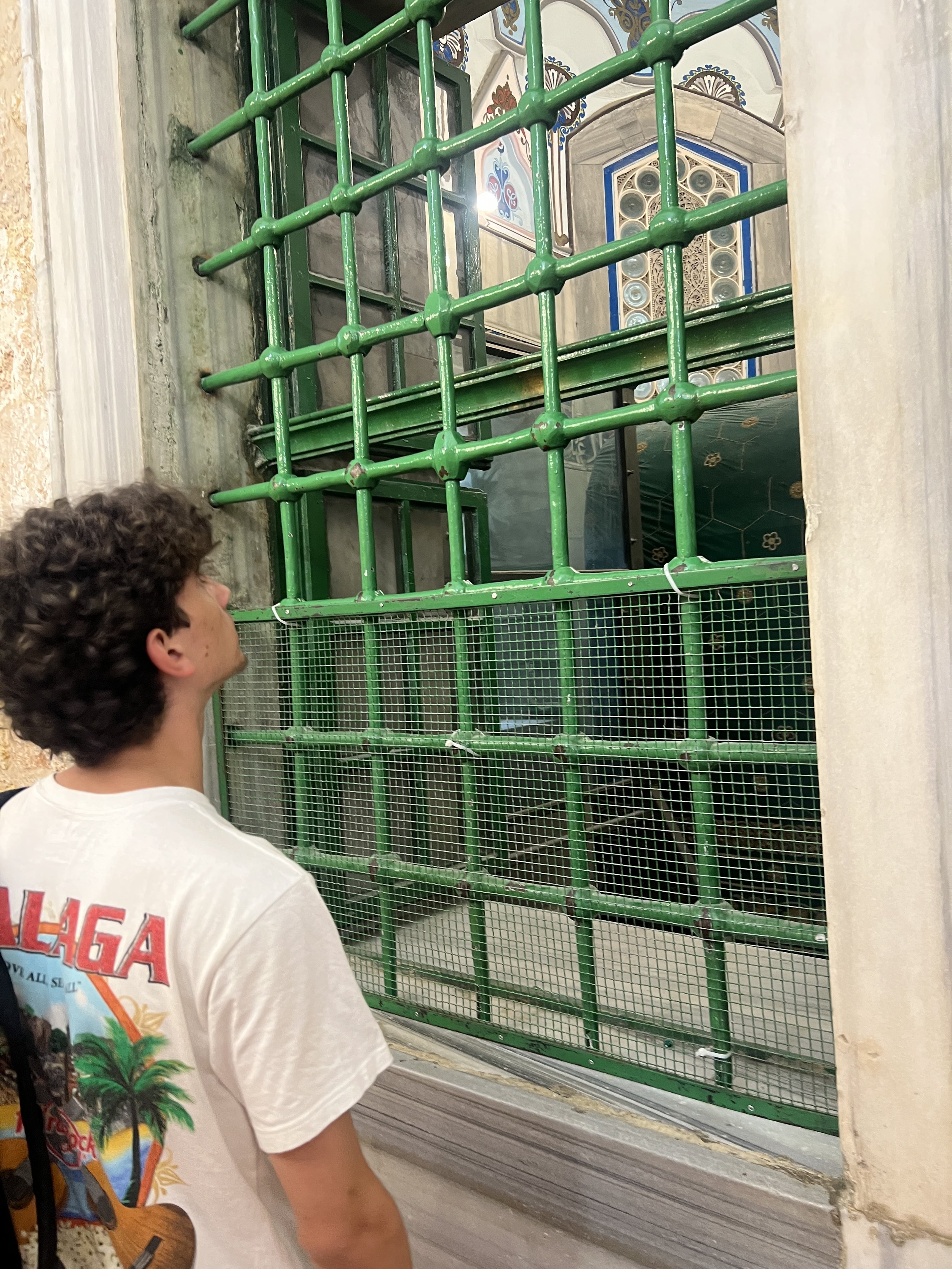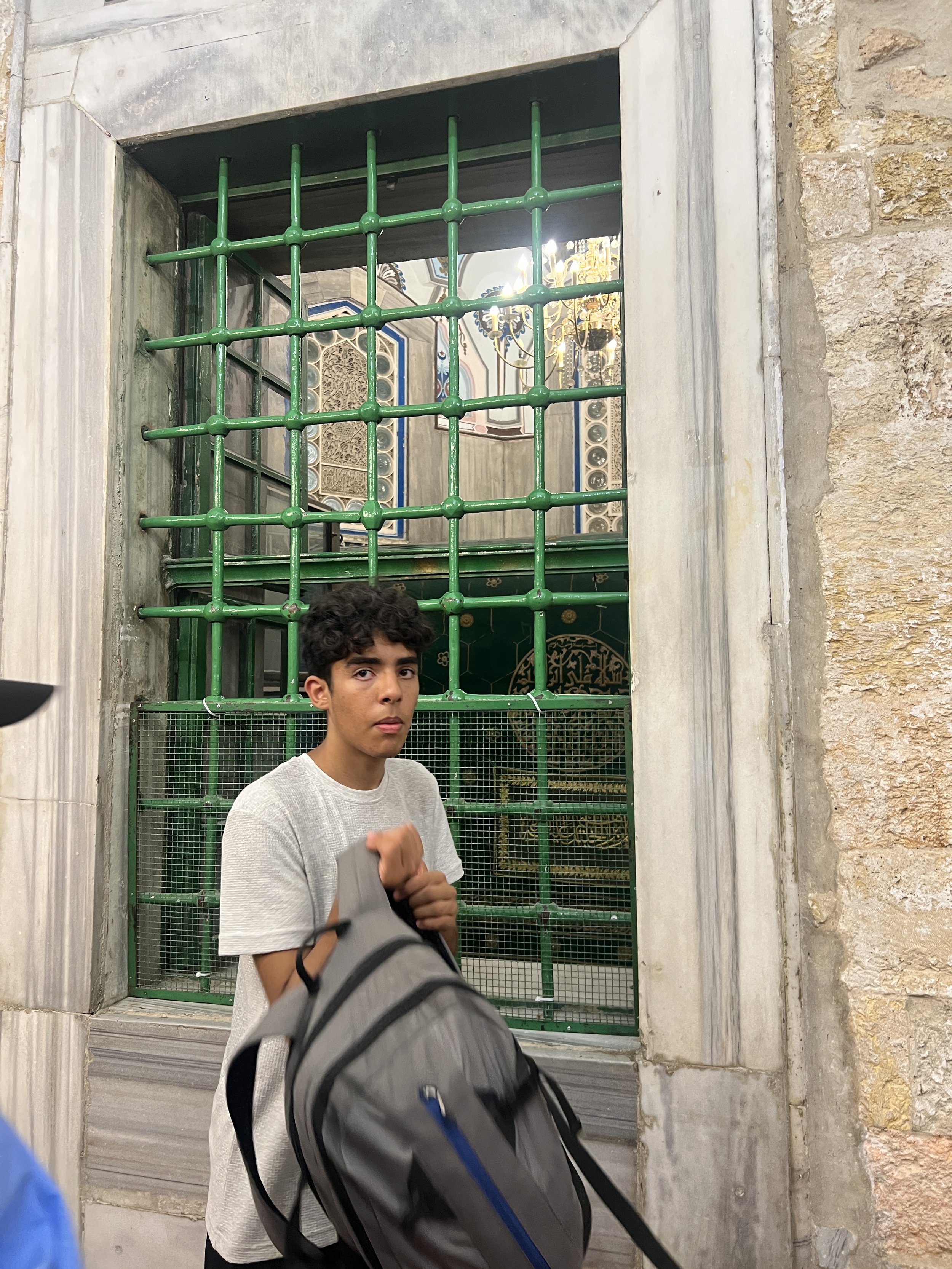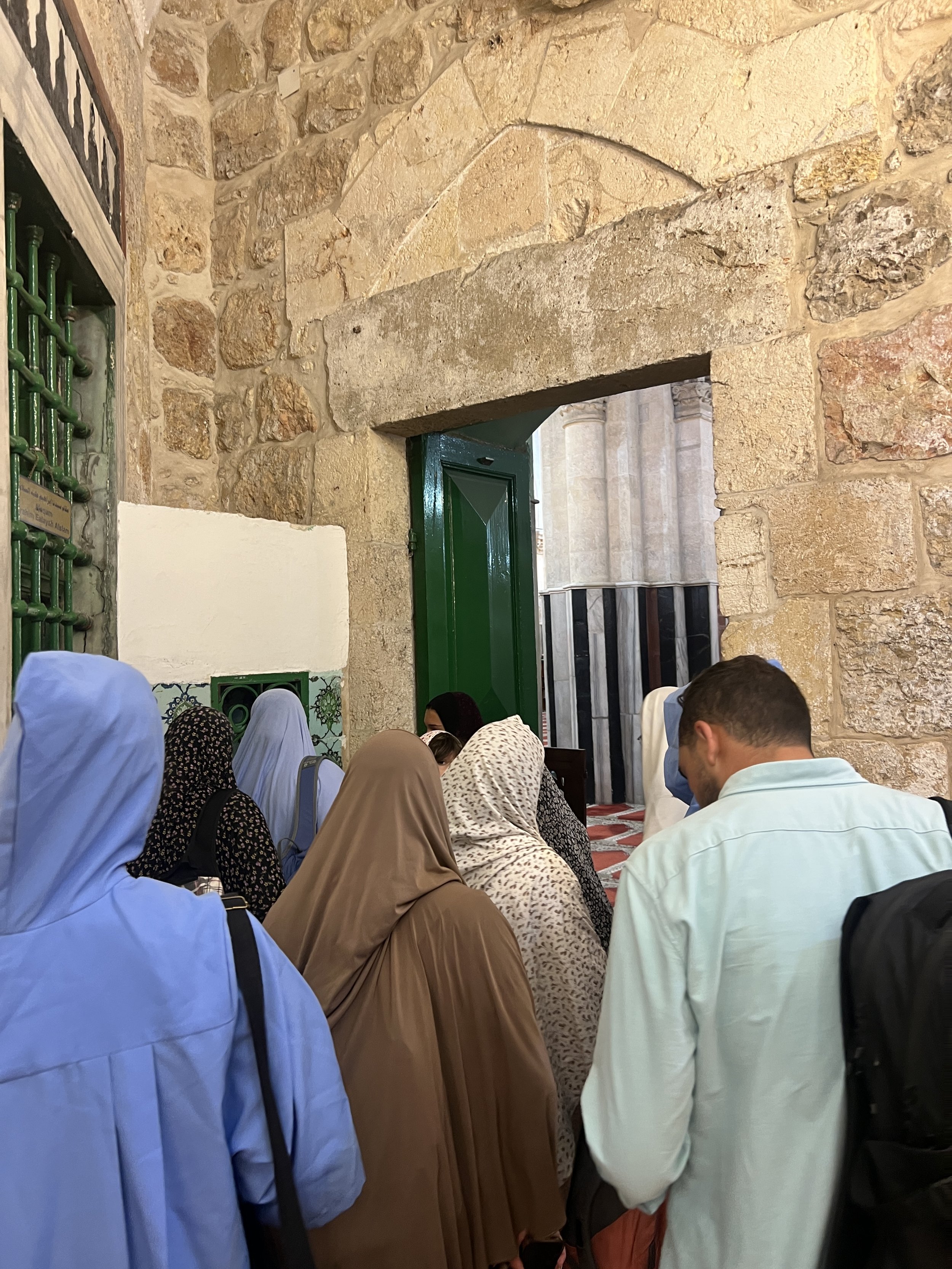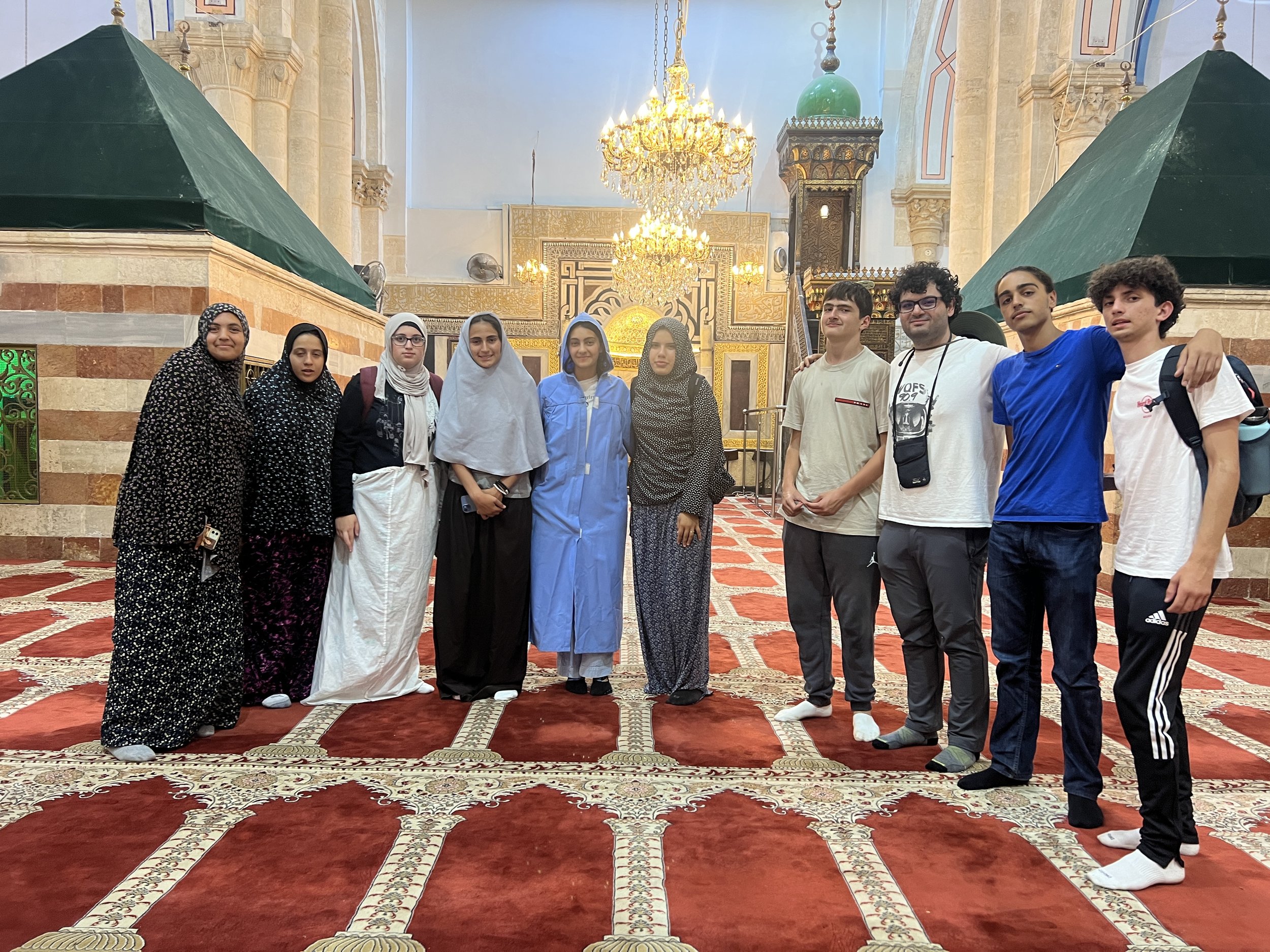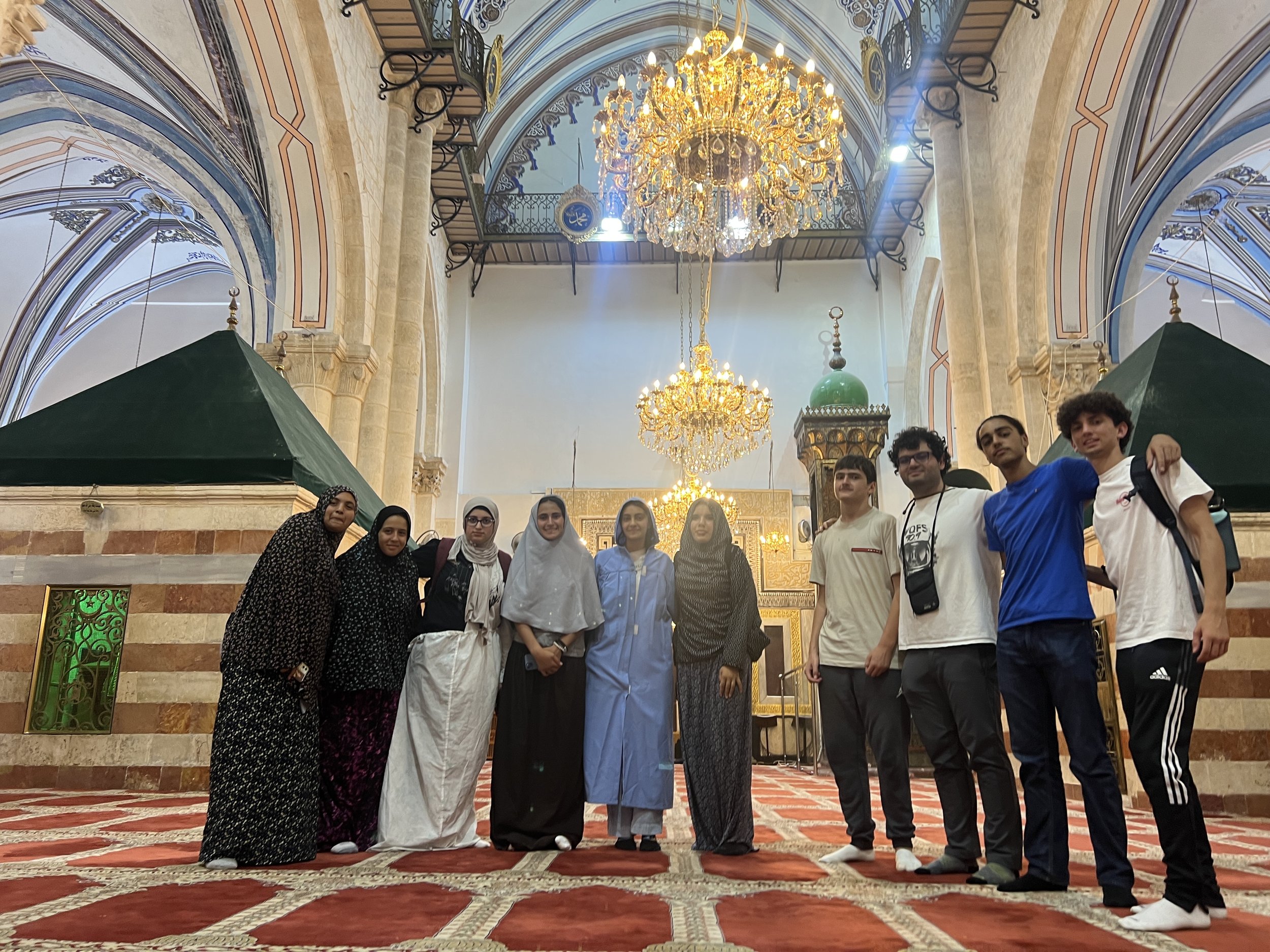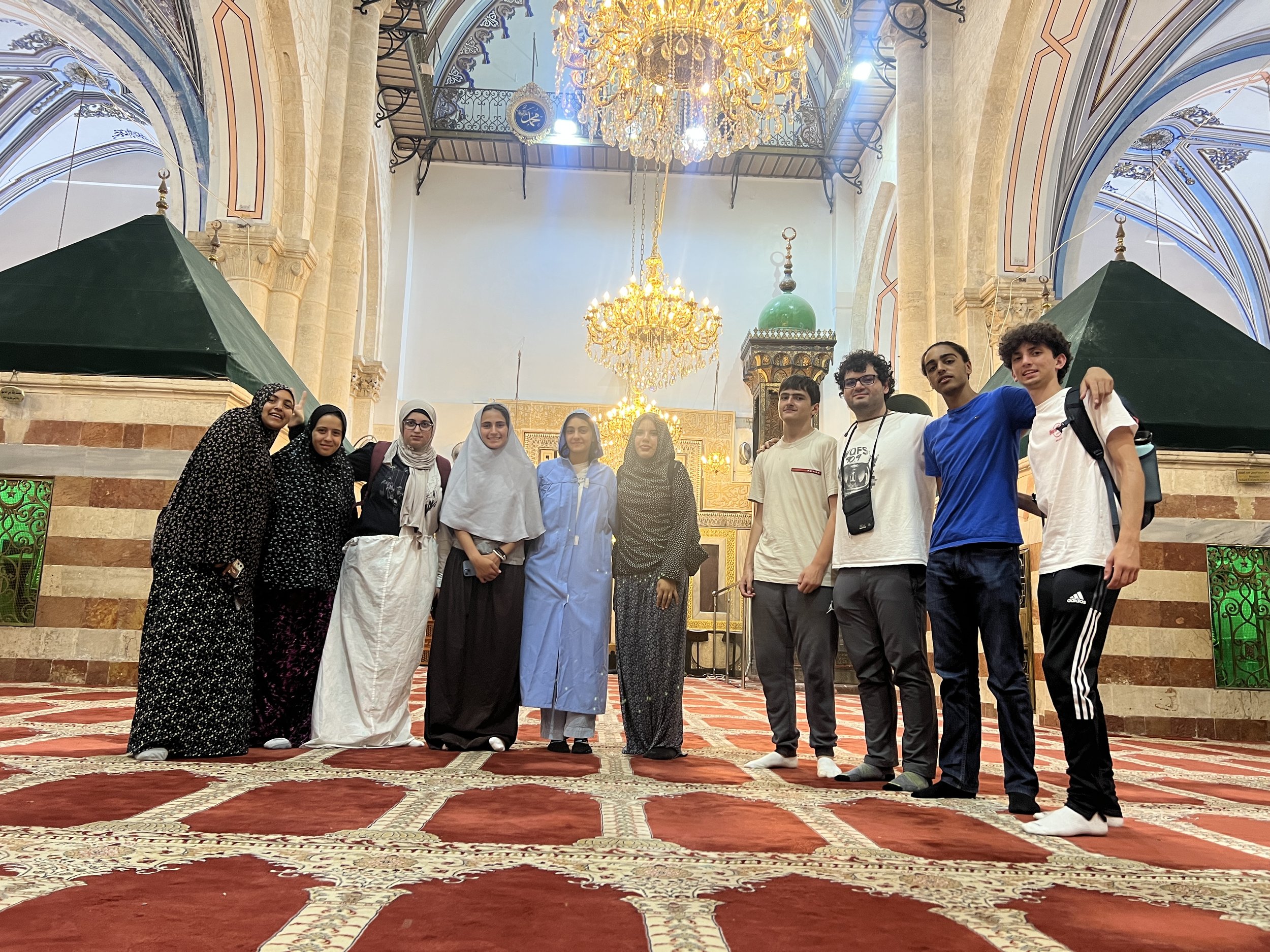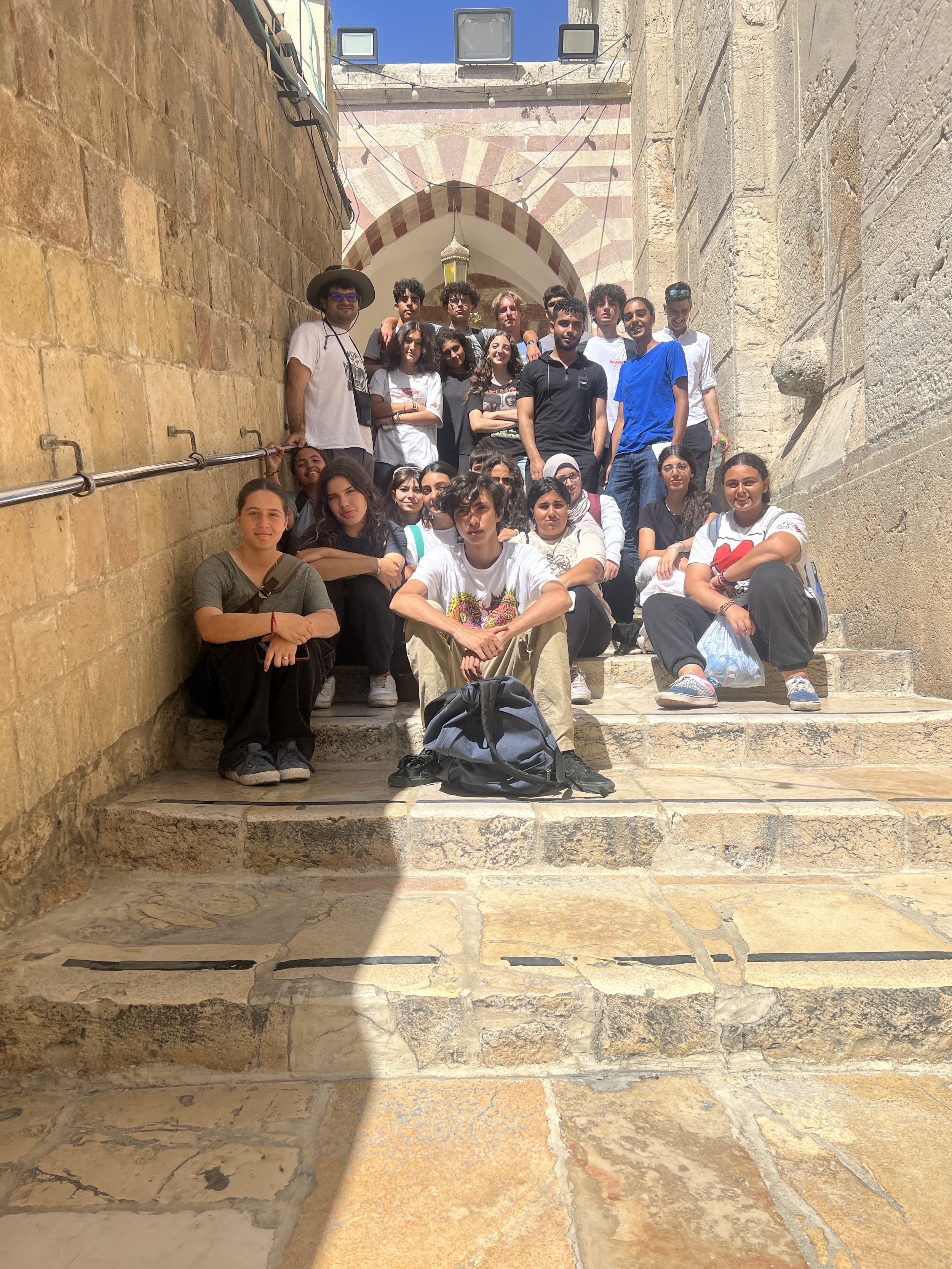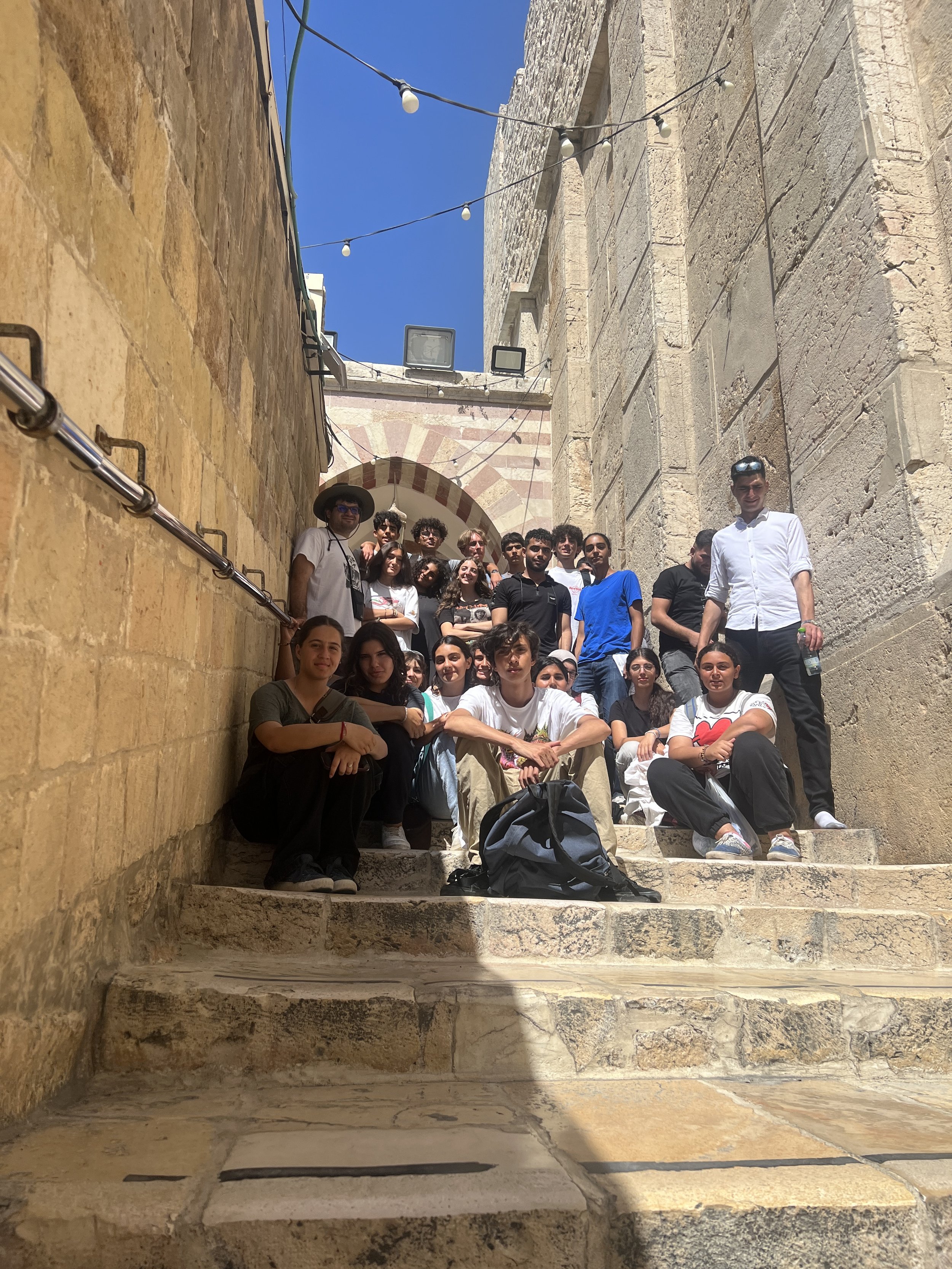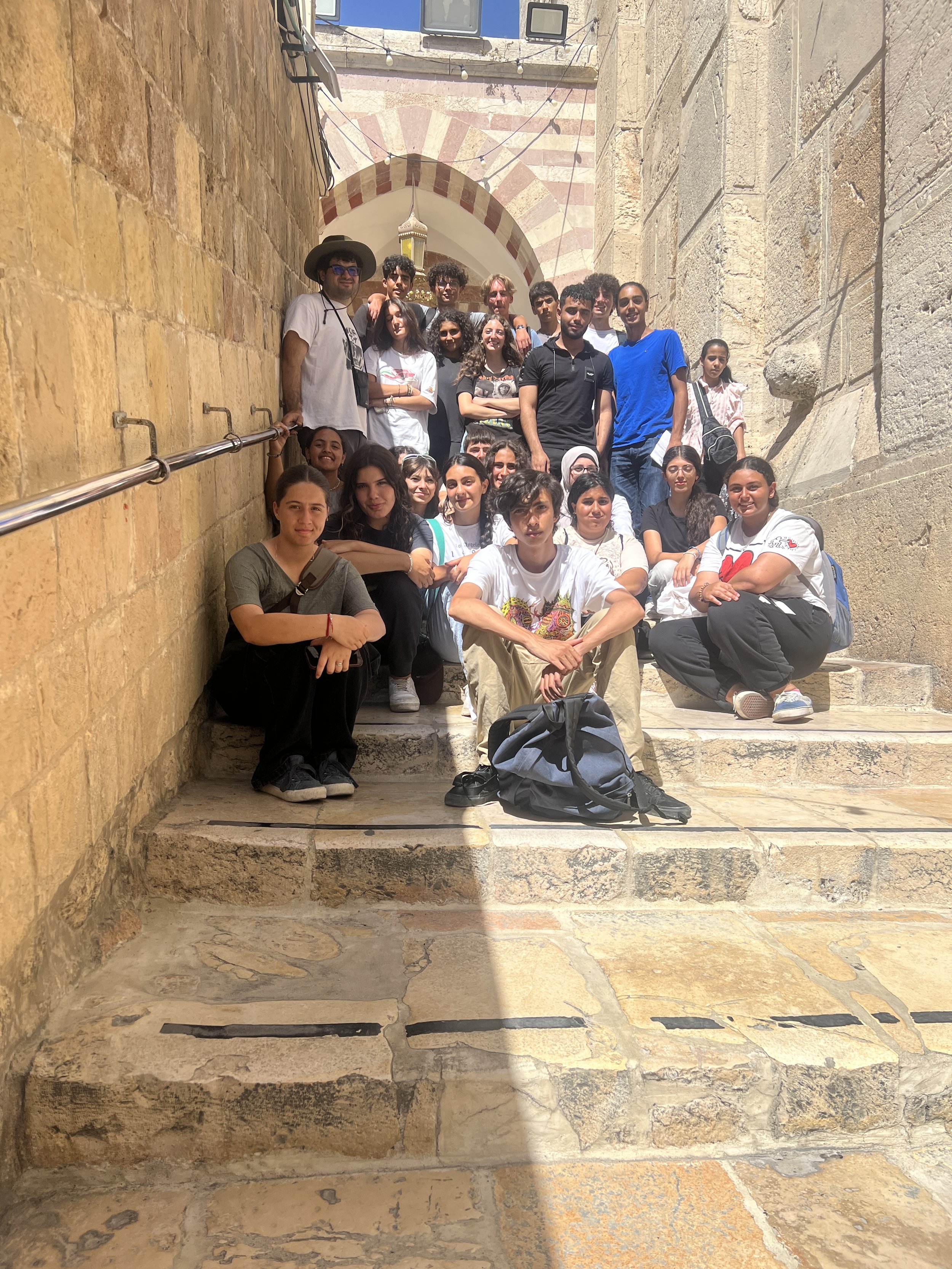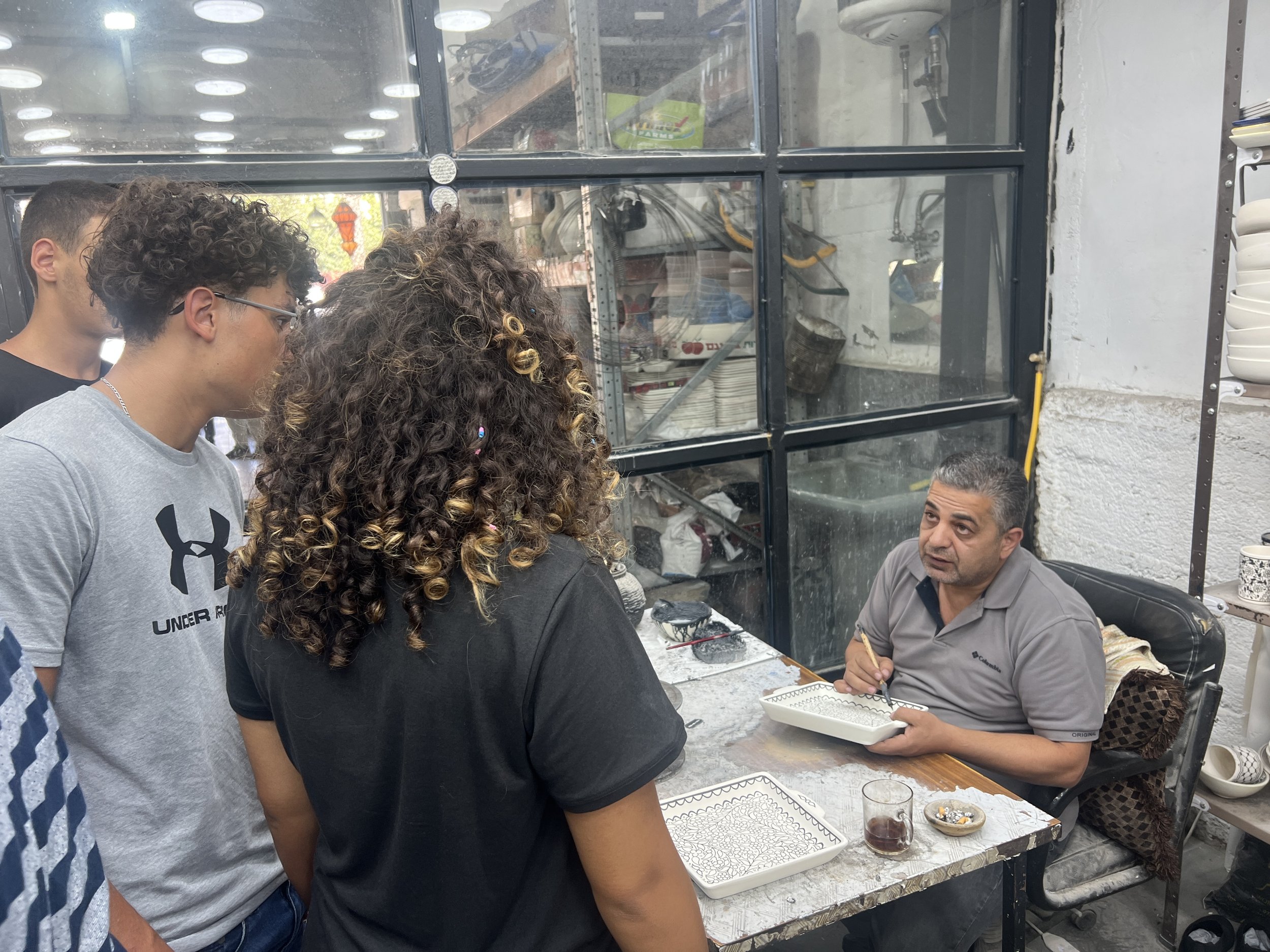Day 14: Hebron
Day 14's journey to Hebron was marked by unforeseen challenges, stark reminders of the complexities of life in Palestine, and profound learnings. Our day commenced with a rather disheartening setback. The unexpected closure of the Qalandia checkpoint resulted in a split of our group: West Bank ID holders took the pedestrian route, while the bus, unfortunately, faced rejection and had to reroute via Hizma. News soon reached us of an incident at the Maale Adumim Settlement, which explained the tightened security measures. Despite our two-hour delay and ensuing changes to our itinerary, we pressed on to Hebron, fortified by assurances about the city's security.
Our journey through Hebron was revelatory, to say the least. An overview on the bus provided context: the division of Hebron into H1 and H2 zones, with H2 being the Israeli settlers' enclave right in the heart of the city. As we meandered through the Old City's market, the palpable shift in the area's energy became unmistakable. The lively market scene gradually gave way to deserted streets, roadblocks, and a looming military presence. Our route through the Israeli checkpoints and the eerily quiet Shuhada Street was an immersion into the heart of apartheid in Hebron. Once teeming with life, the street now stands as a silent testament to military decrees that favor settlers. The unsettling propaganda signs around Beit Hadassah synagogue further underscored the tensions. As we ventured deeper into the city, the omnipresent military apparatus, including the newly installed remote-controlled tear gas gun, felt almost dystopian.
Yet, amidst these bleak realities, we also witnessed resilience. Our guide shed light on the commendable endeavors of the Hebron Rehabilitation Committee. We also met with the Hebron Human Rights Committee. Their mission to document the human rights infringements in the Old City by the military was nothing short of inspiring.
We continued with our visit to the Ibrahimi Mosque. The mosque, stained by the 1994 massacre, stands as a poignant reminder of the violence that has scarred this holy site. The guide explained that these “security” measures were installed following the 1994 massacre by Baruch Goldstein, a settler from New York, who entered the mosque during prayers during the holy month of Ramadan and shot and killed 29 men prostrating during prayers.
As we eventually made our way back to Bethlehem, further checkpoint complications awaited us, further emphasizing the collective challenges Palestinians face under the Israeli occupation. The day's experiences, though fraught with tension, were pivotal in deepening our understanding of the systemic measures reinforcing apartheid in the country.


